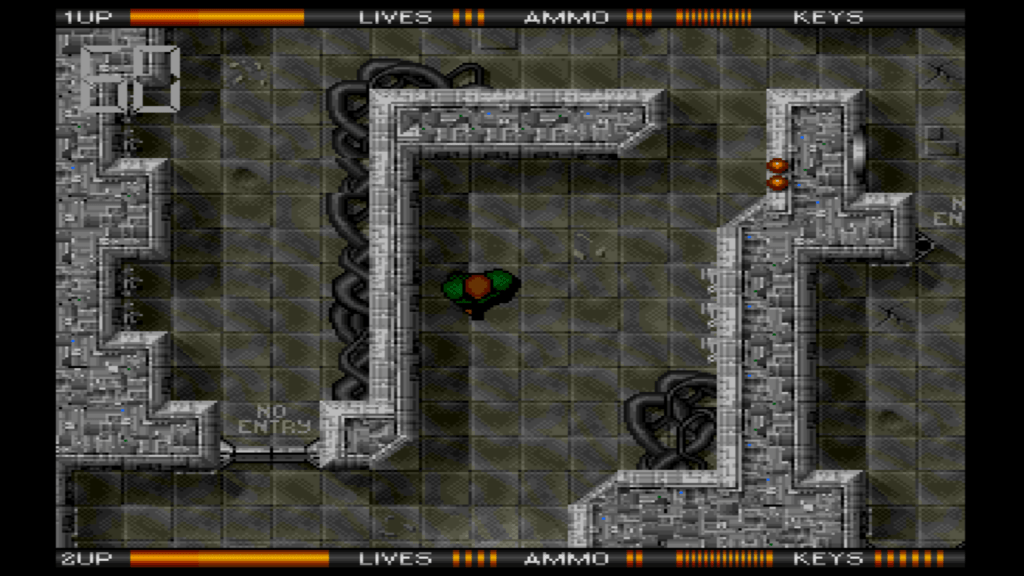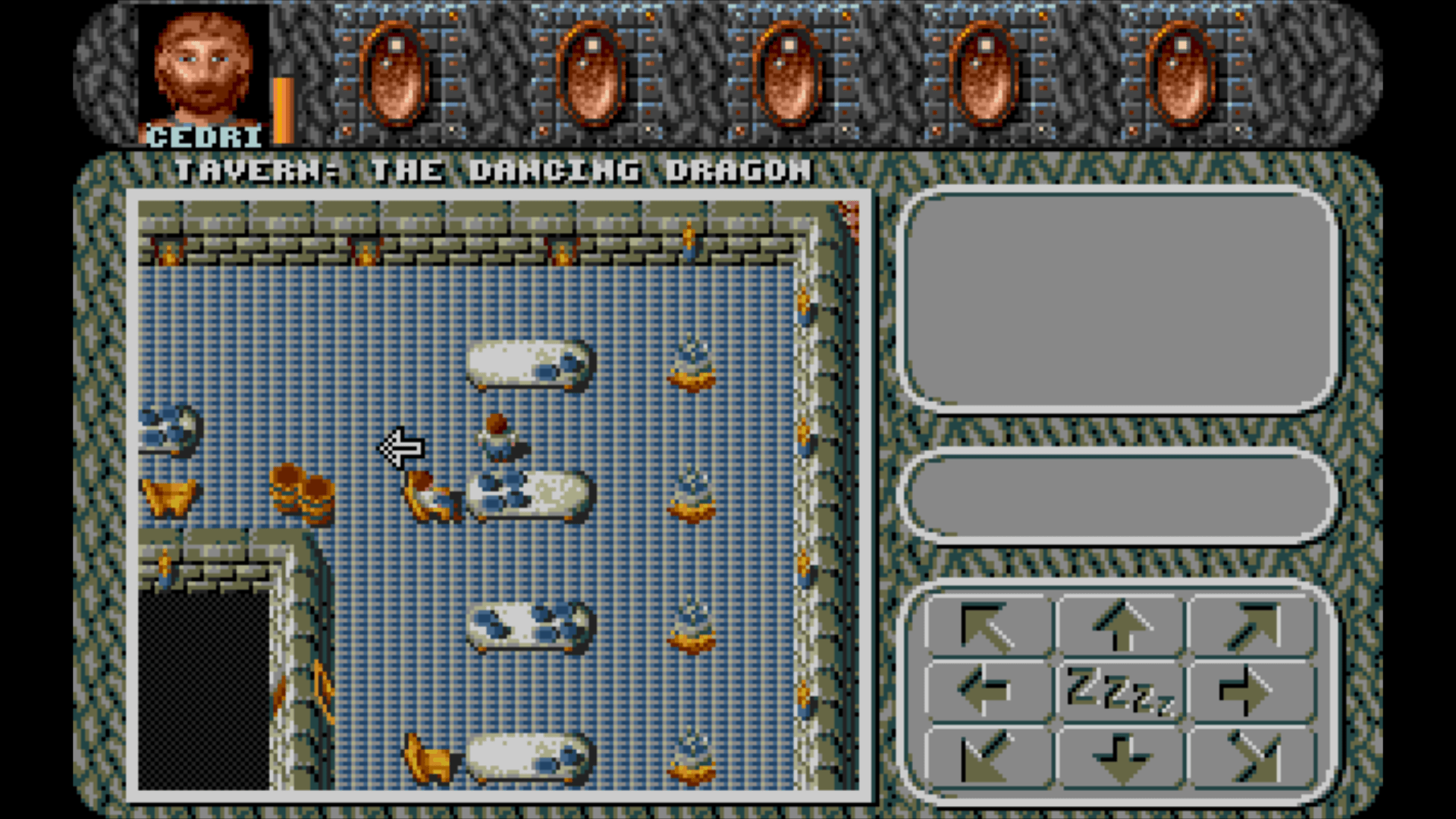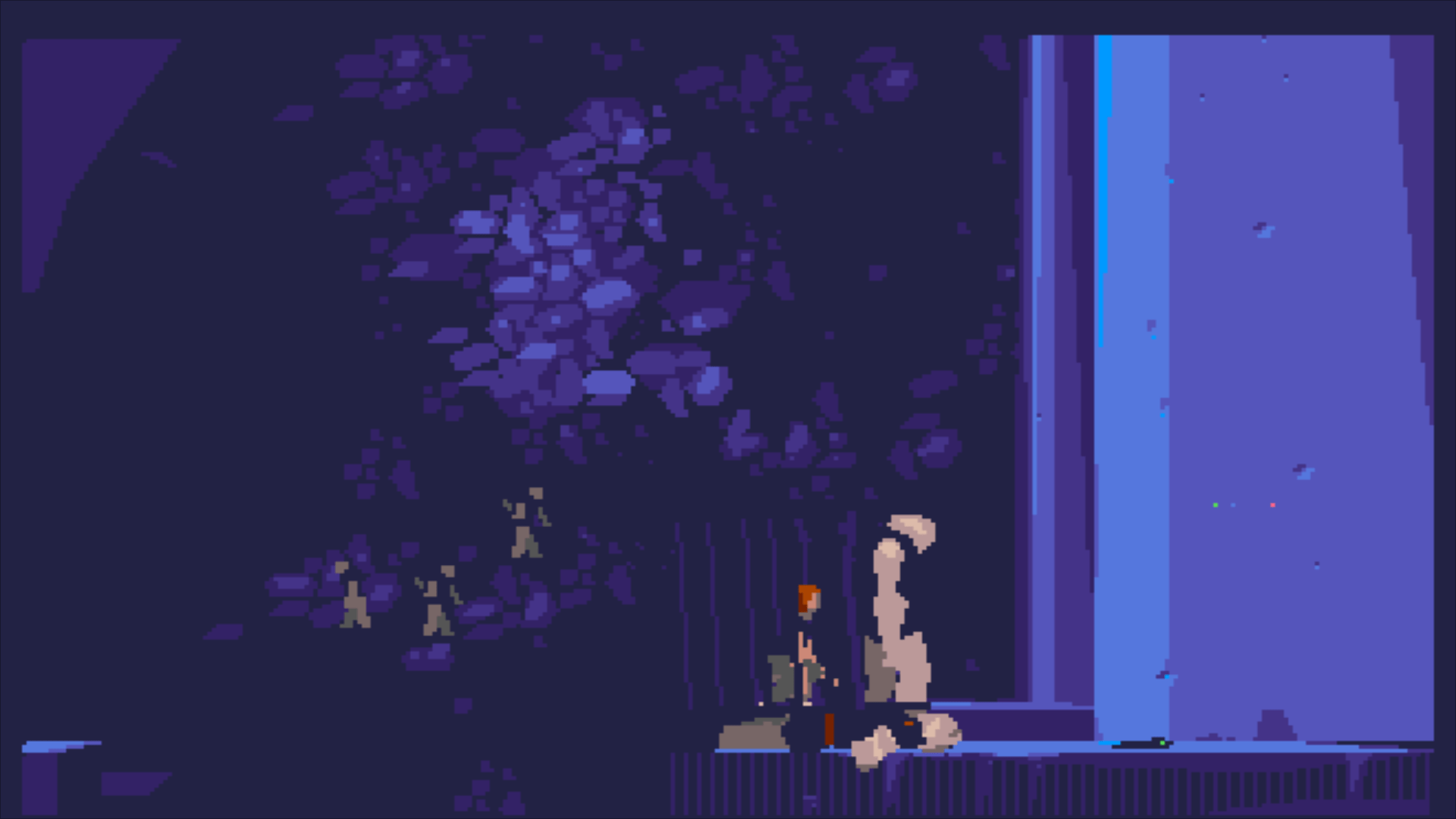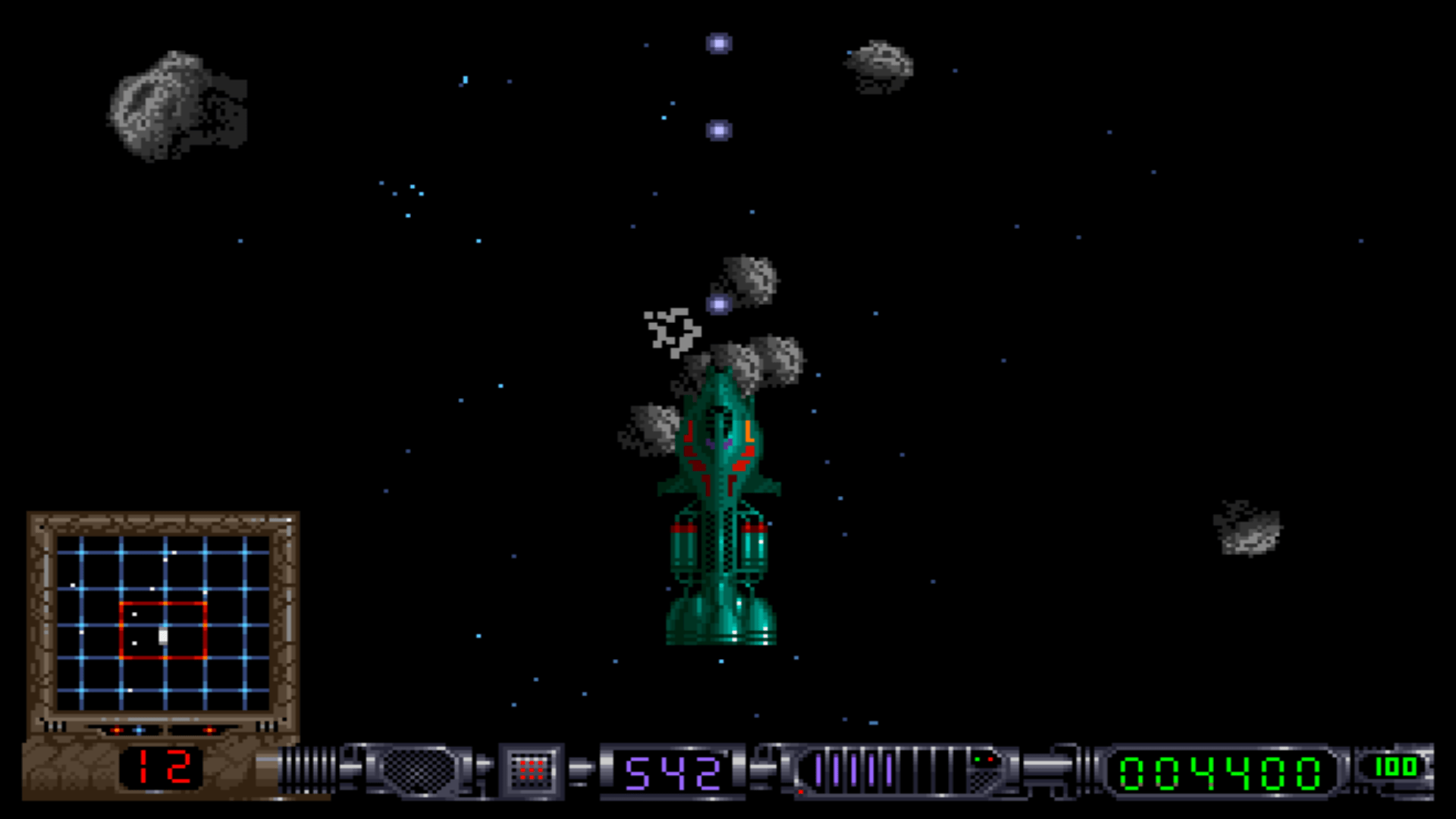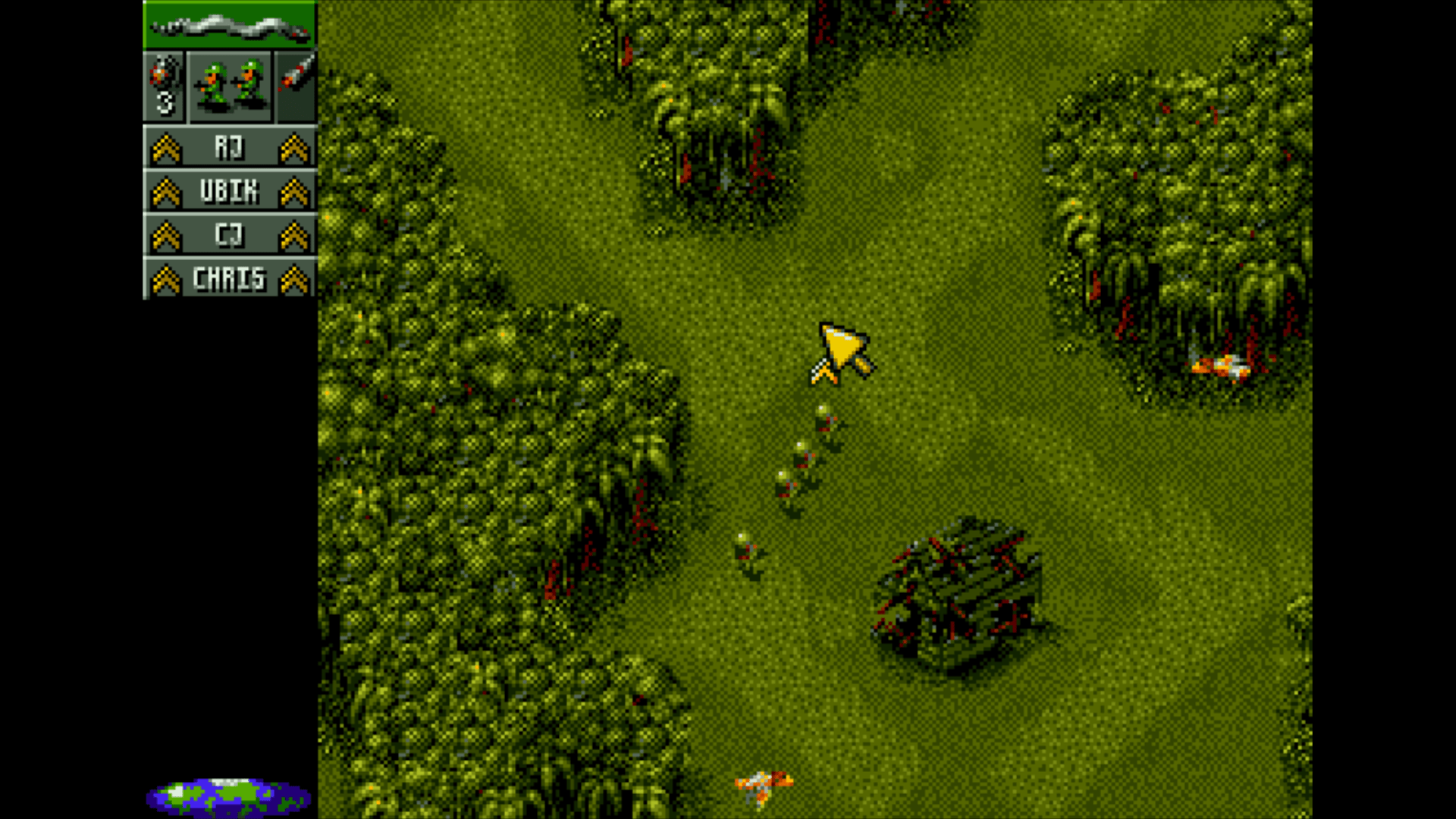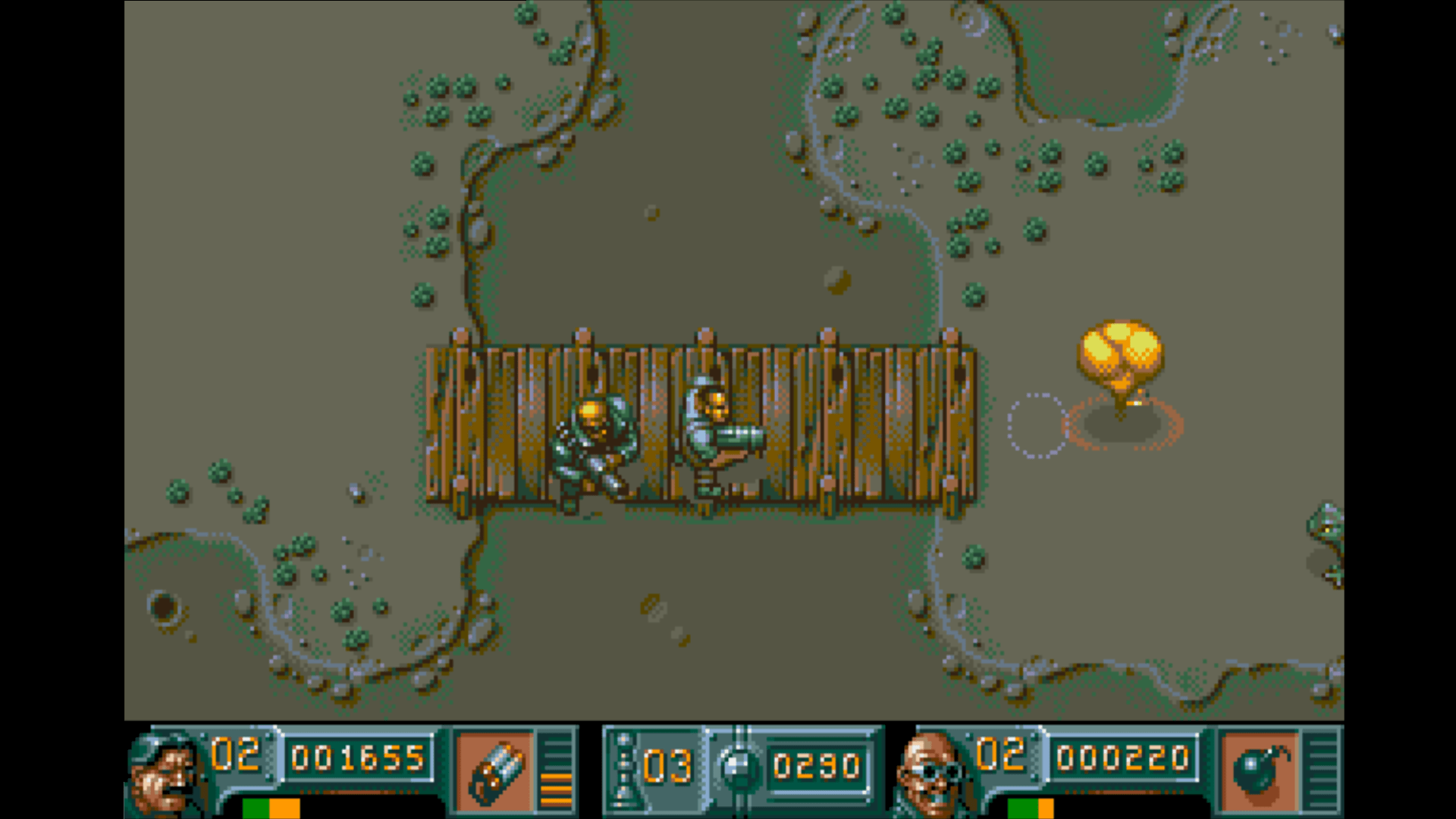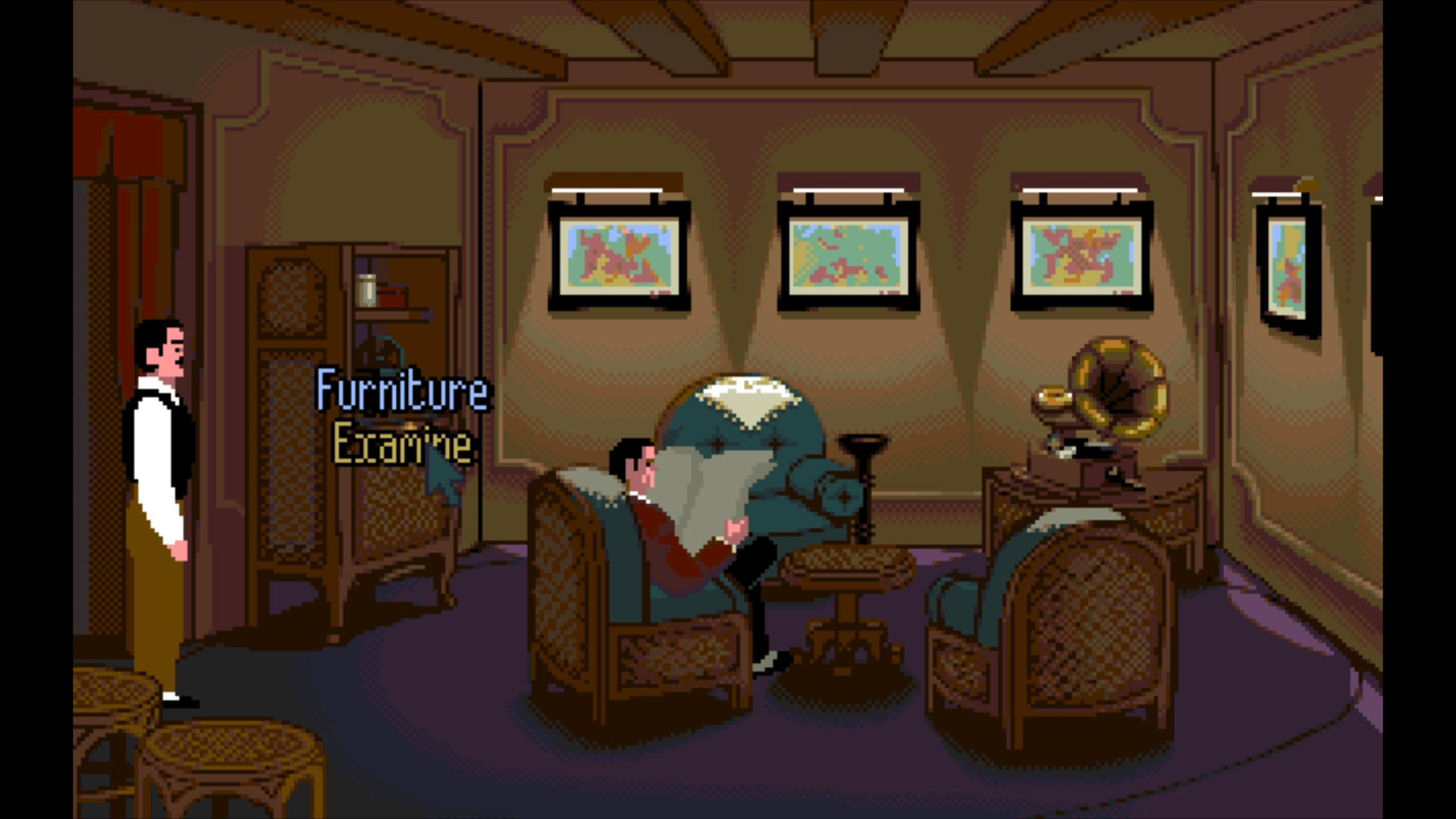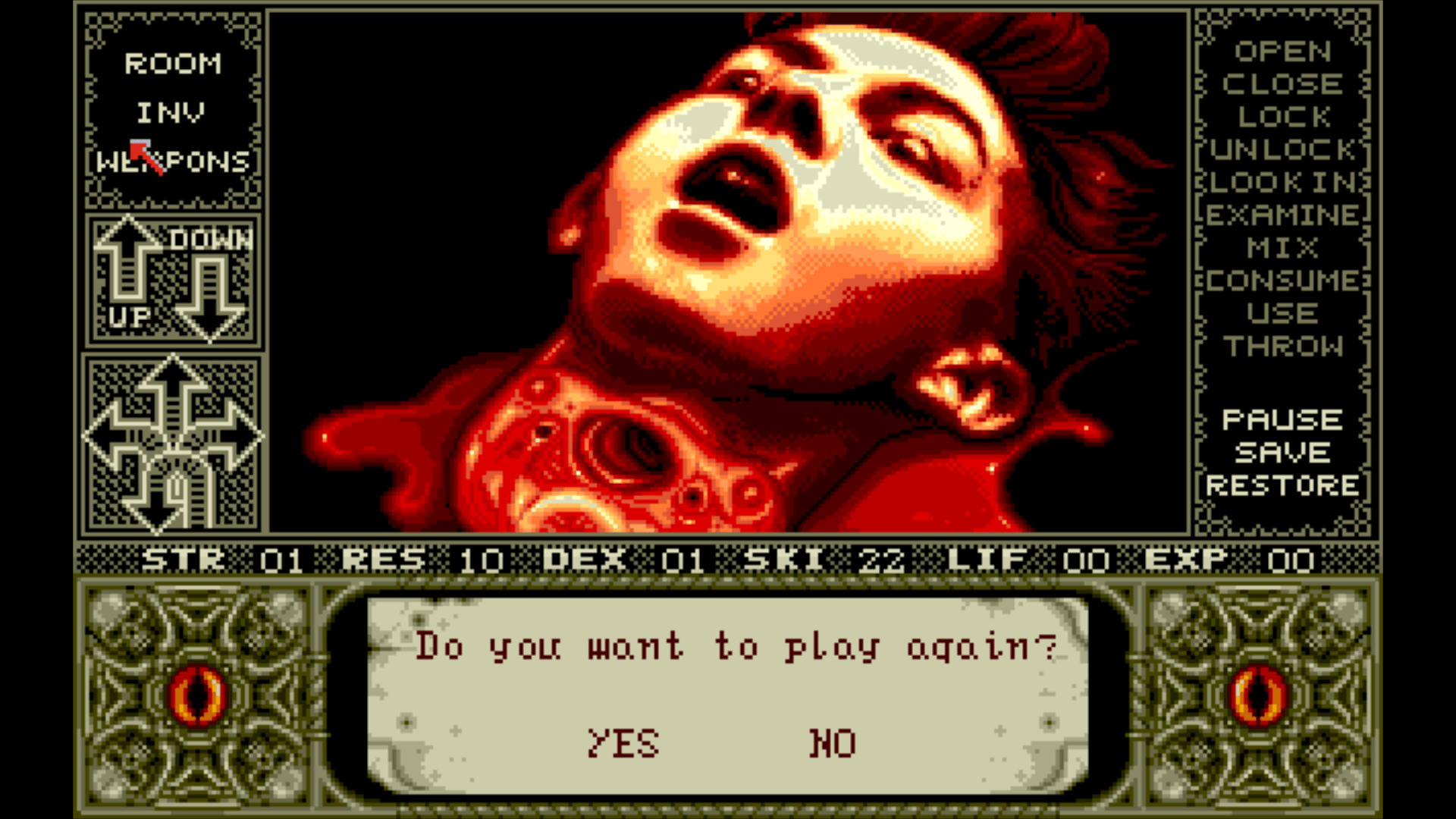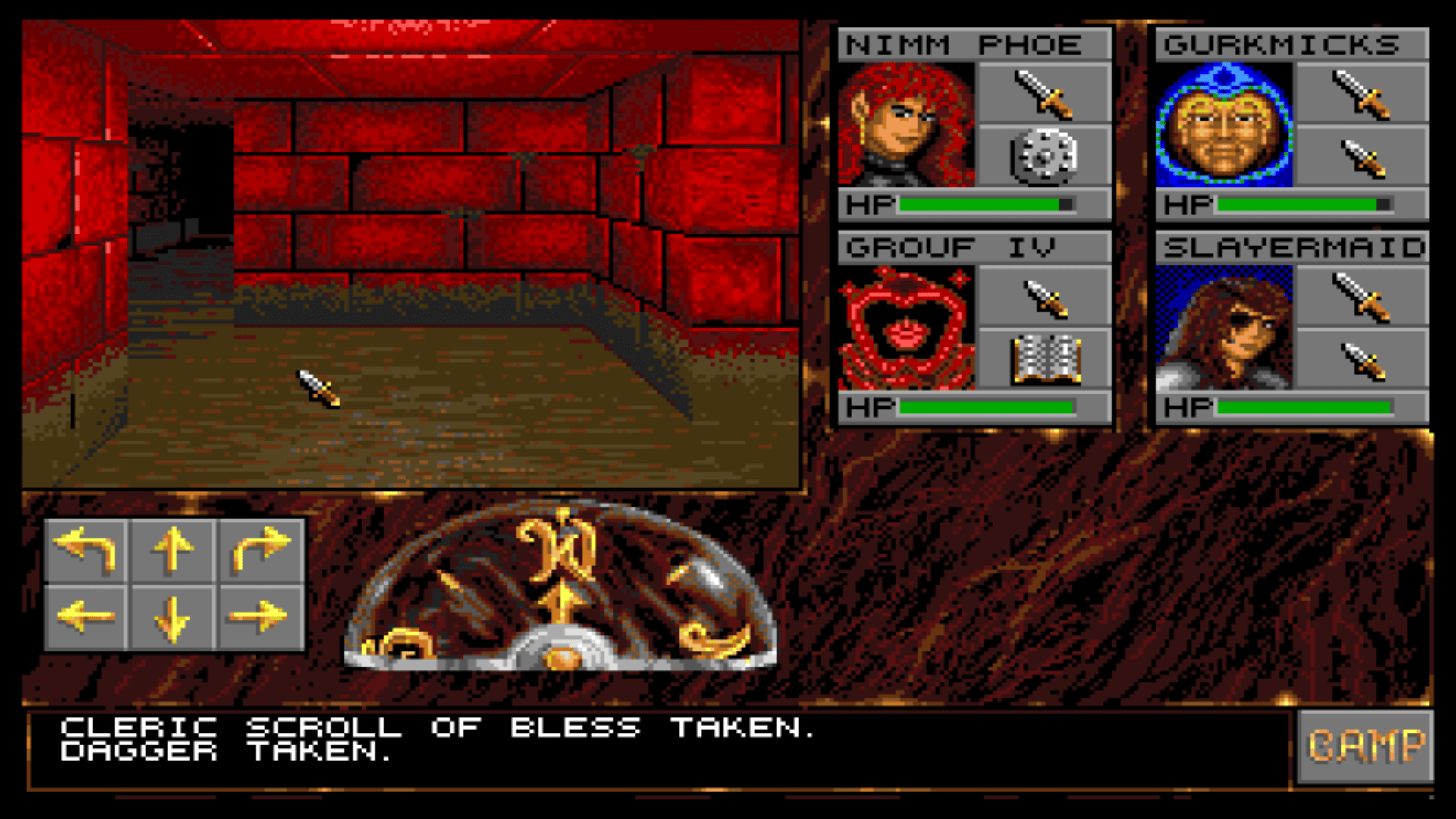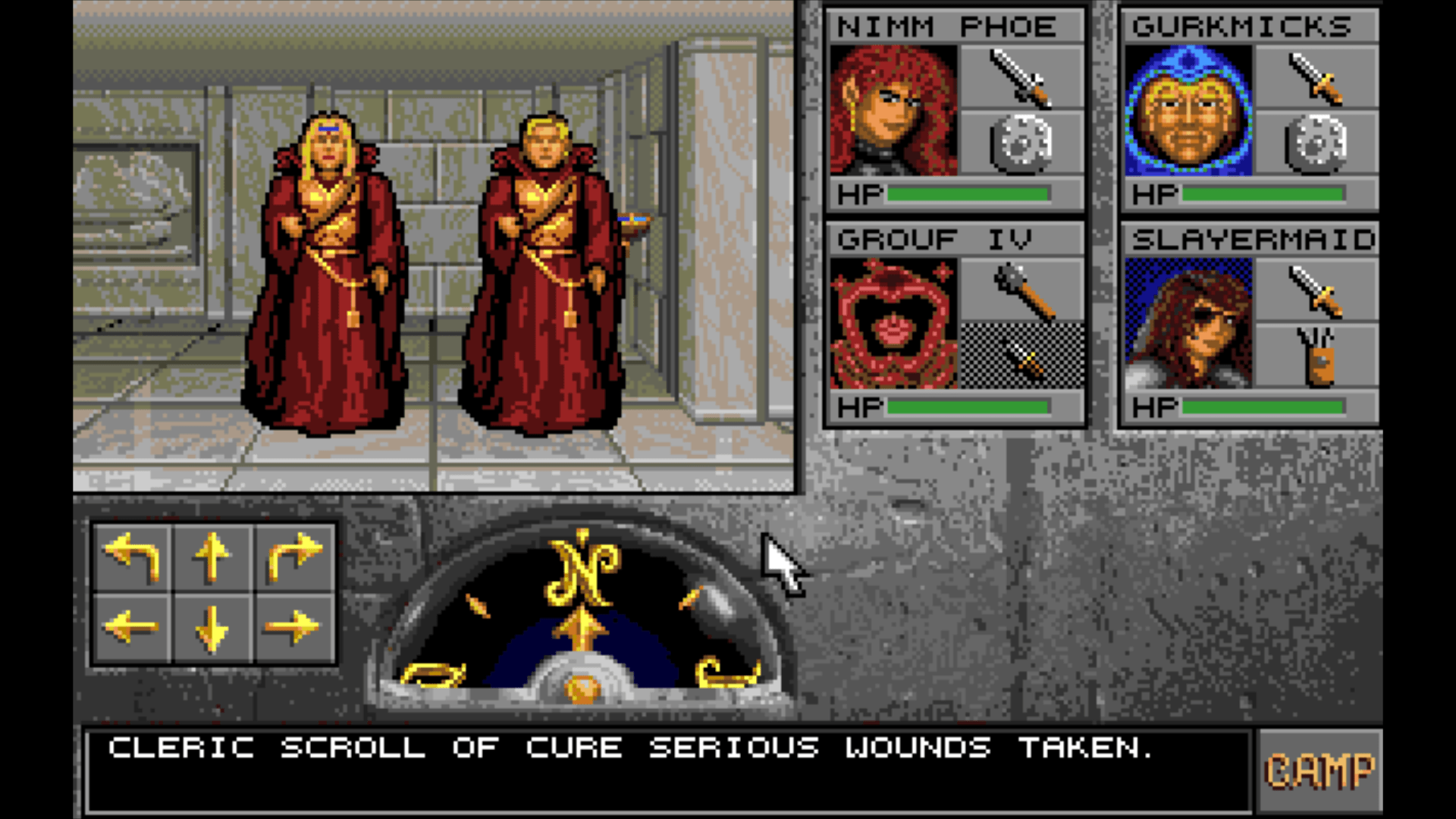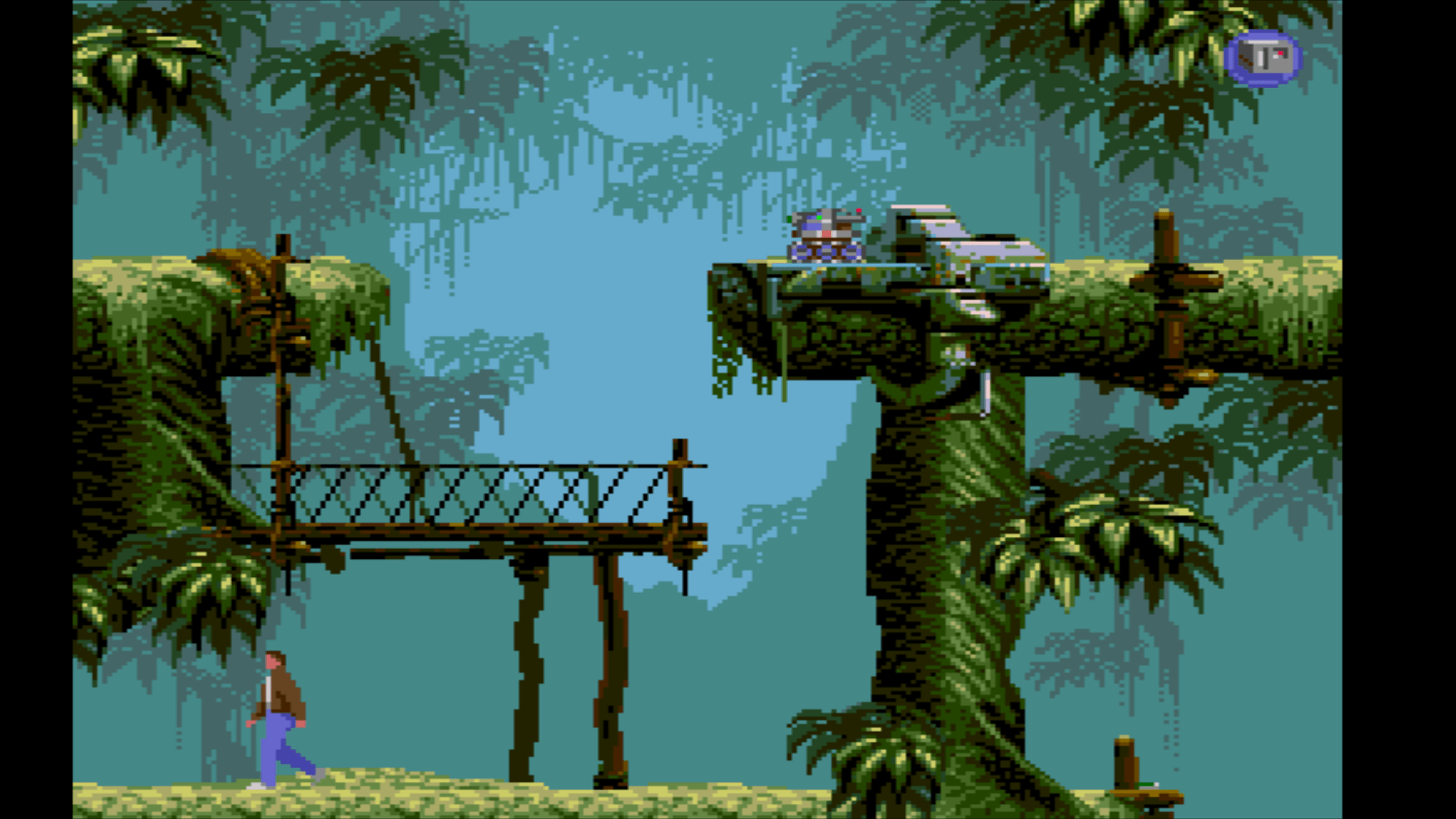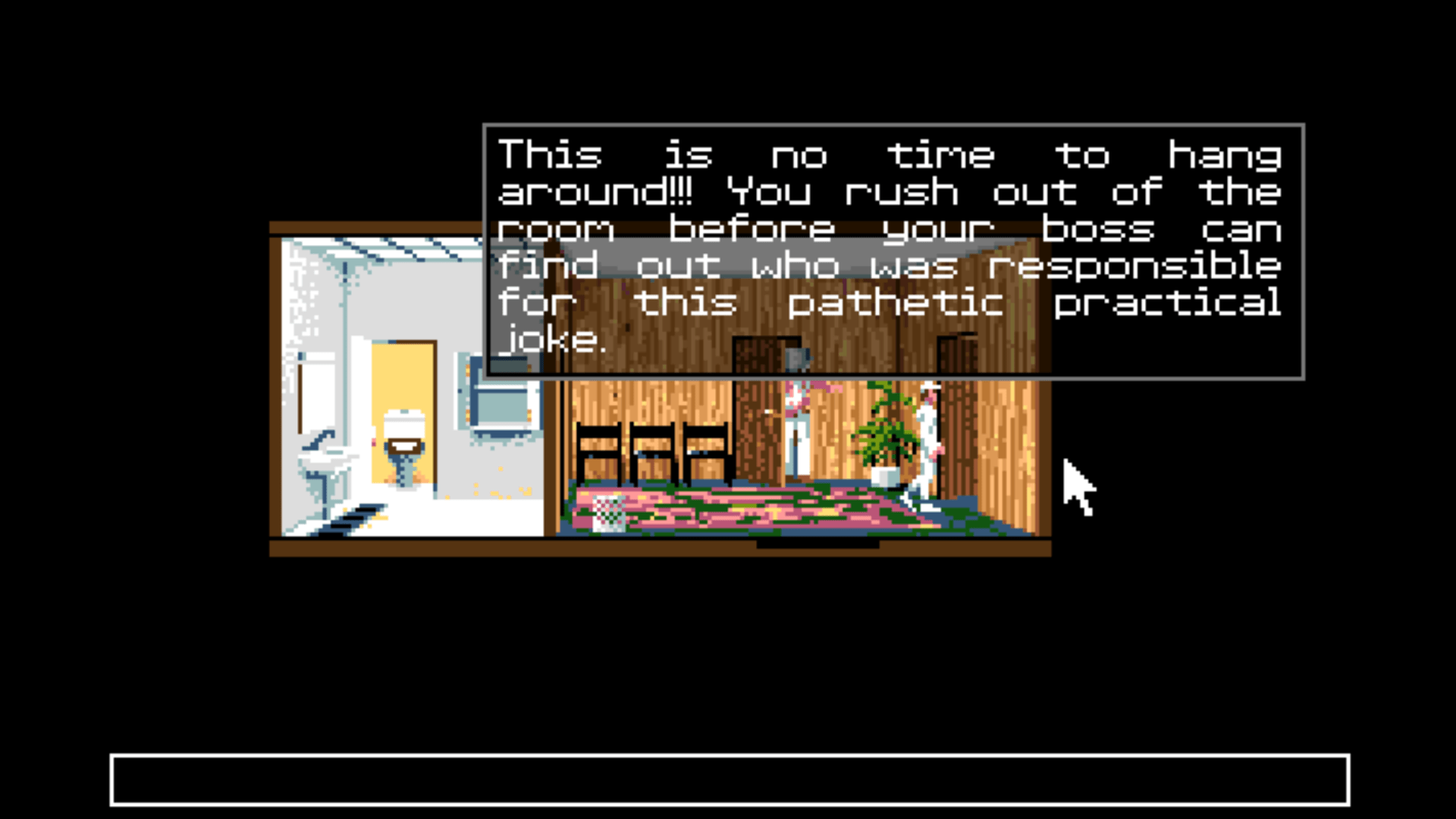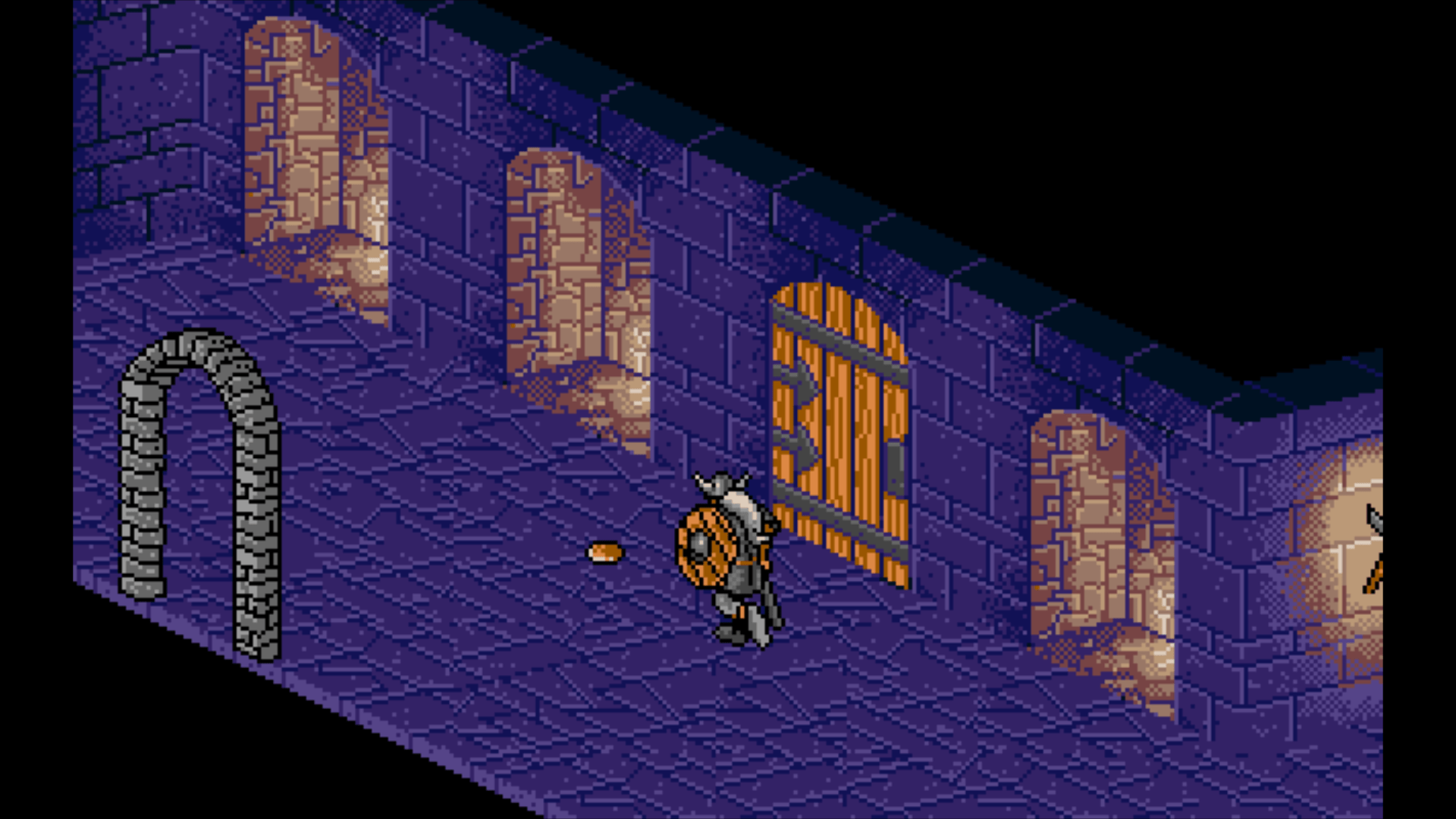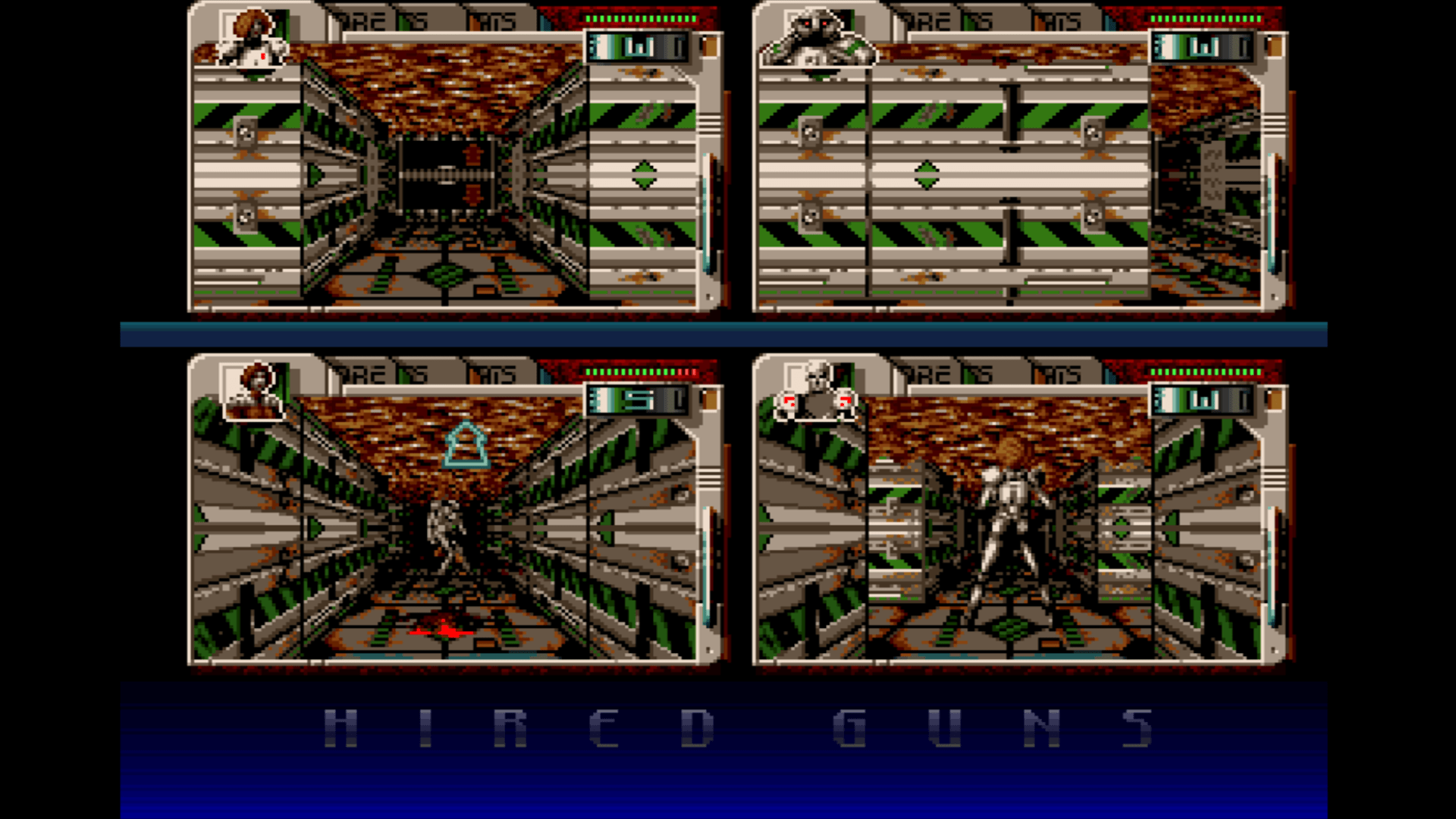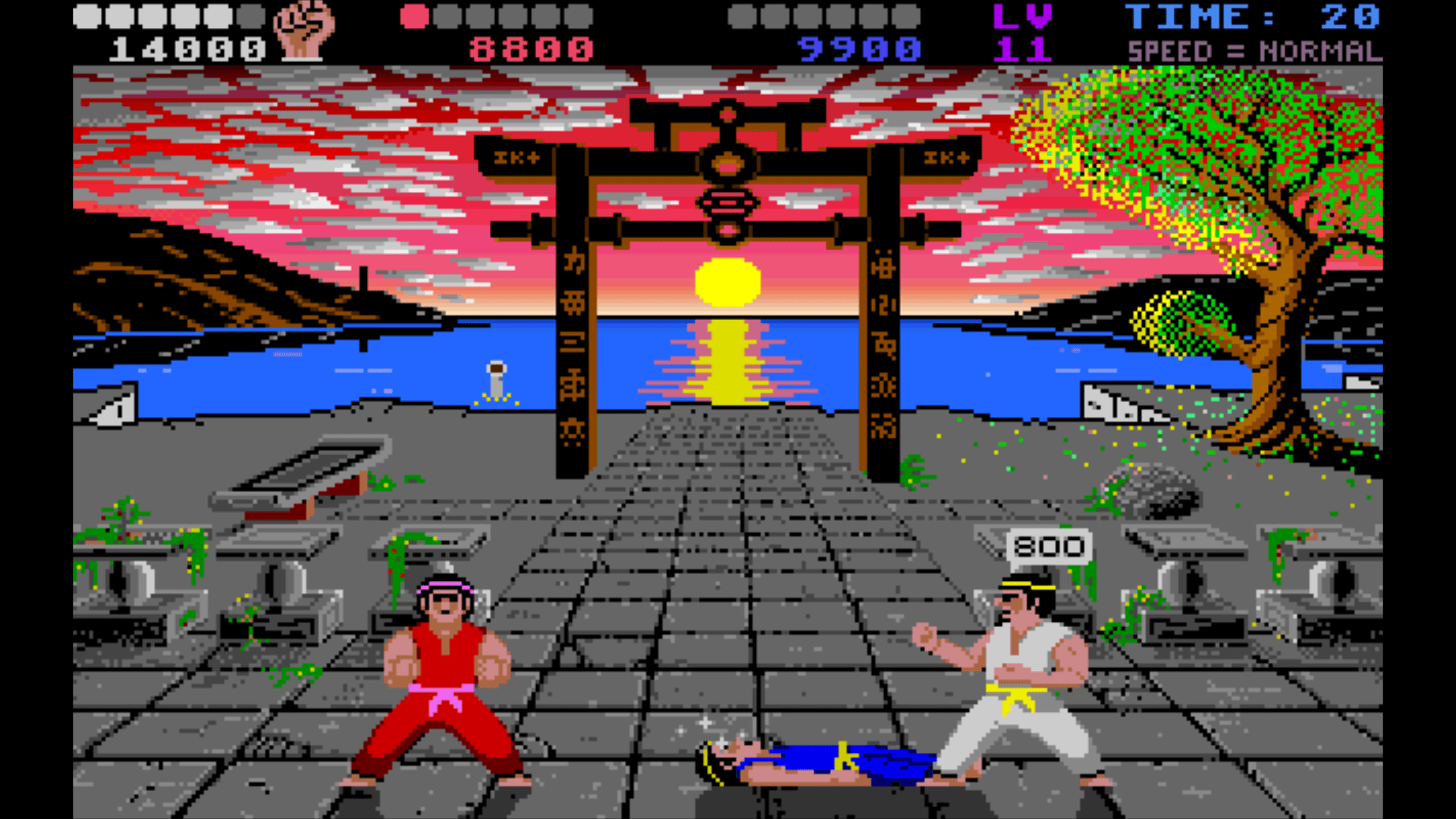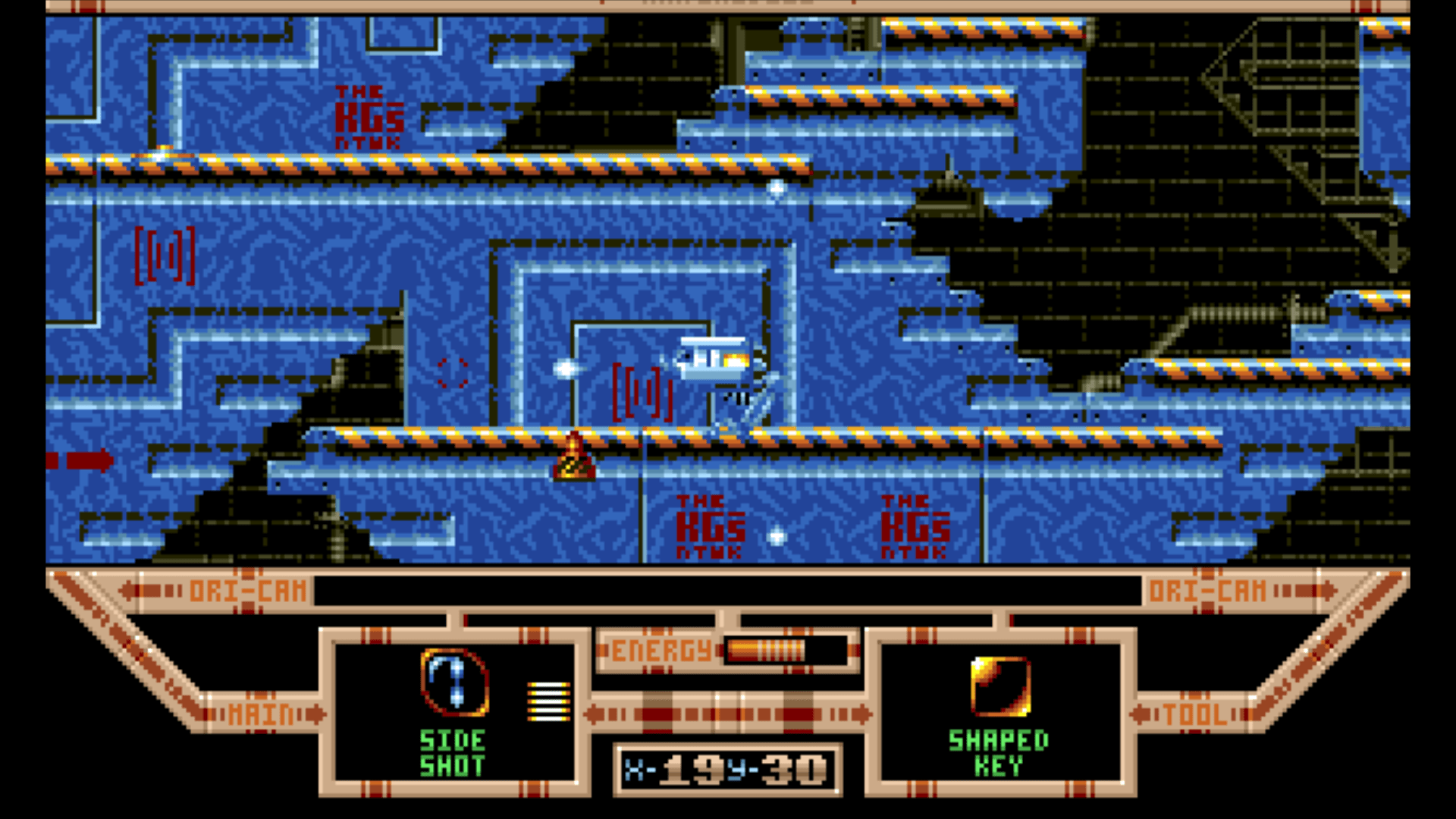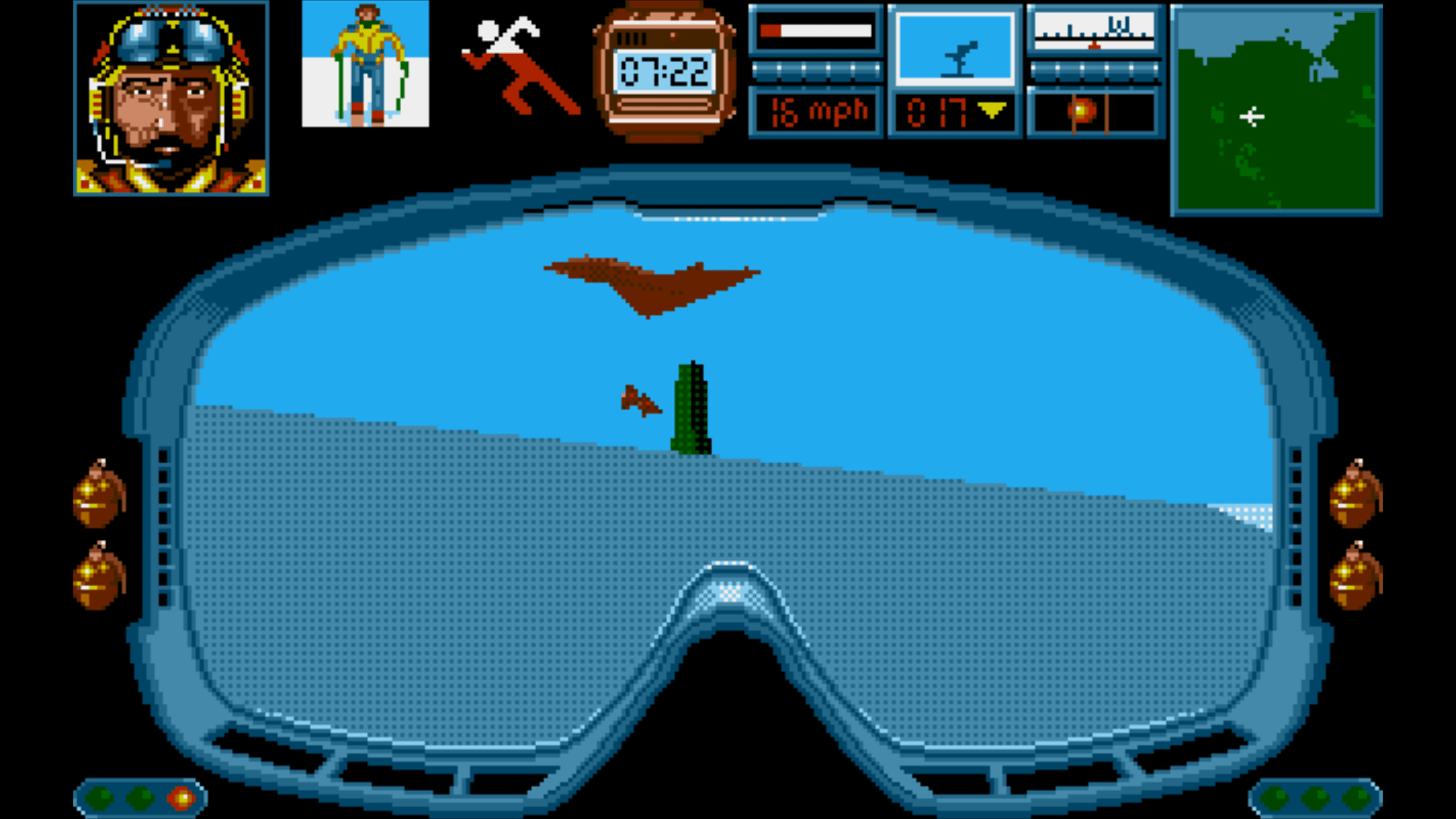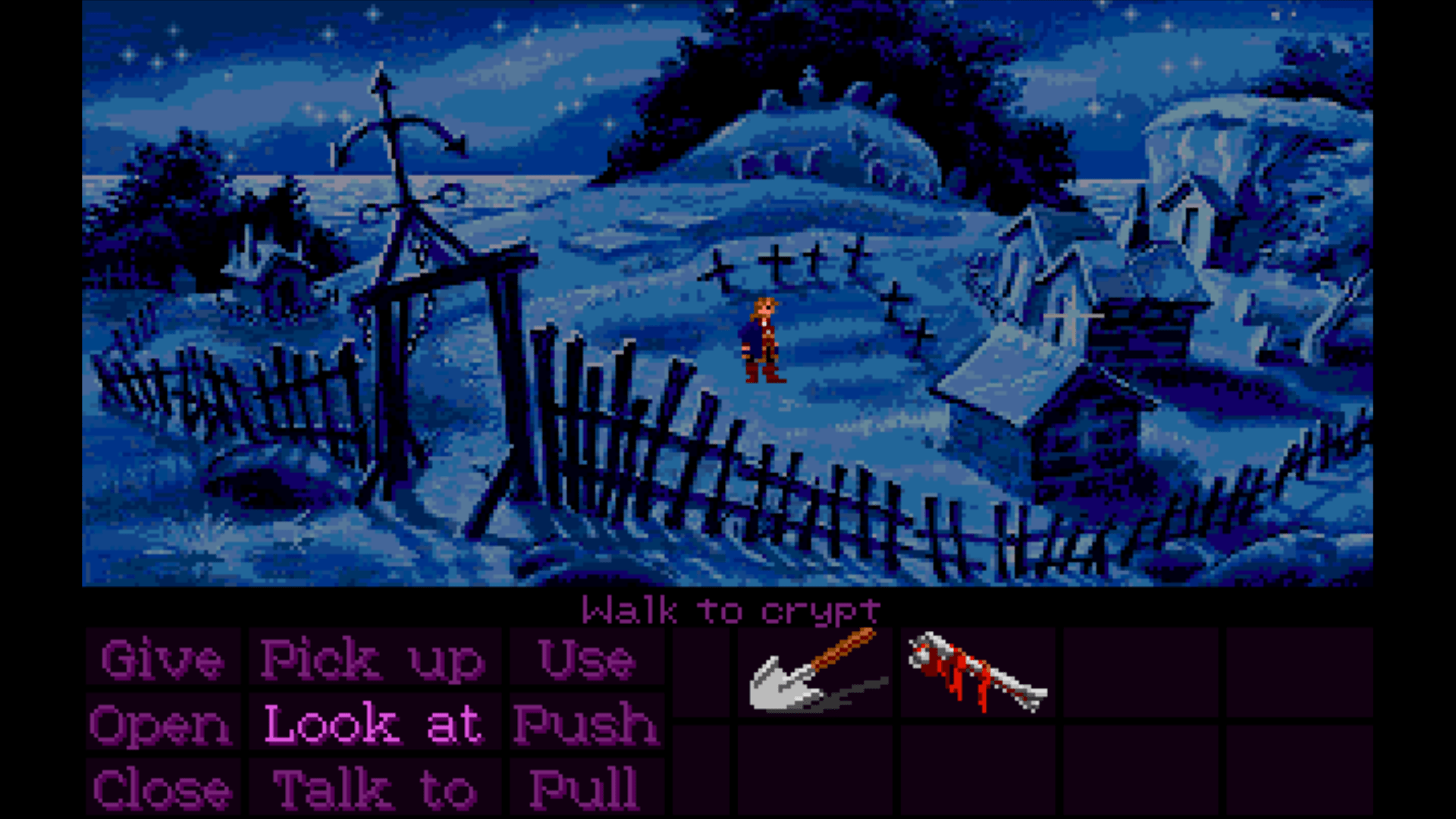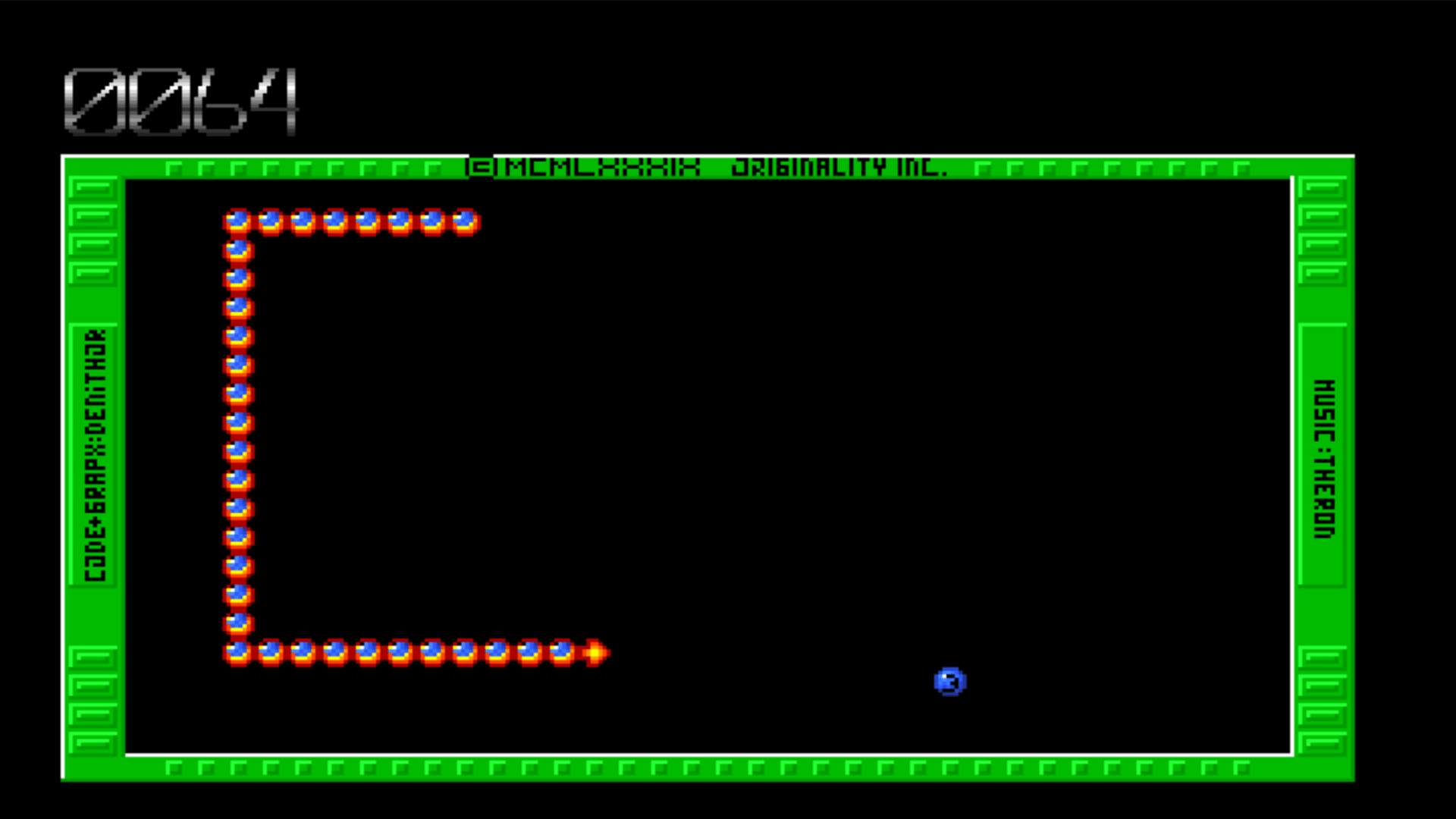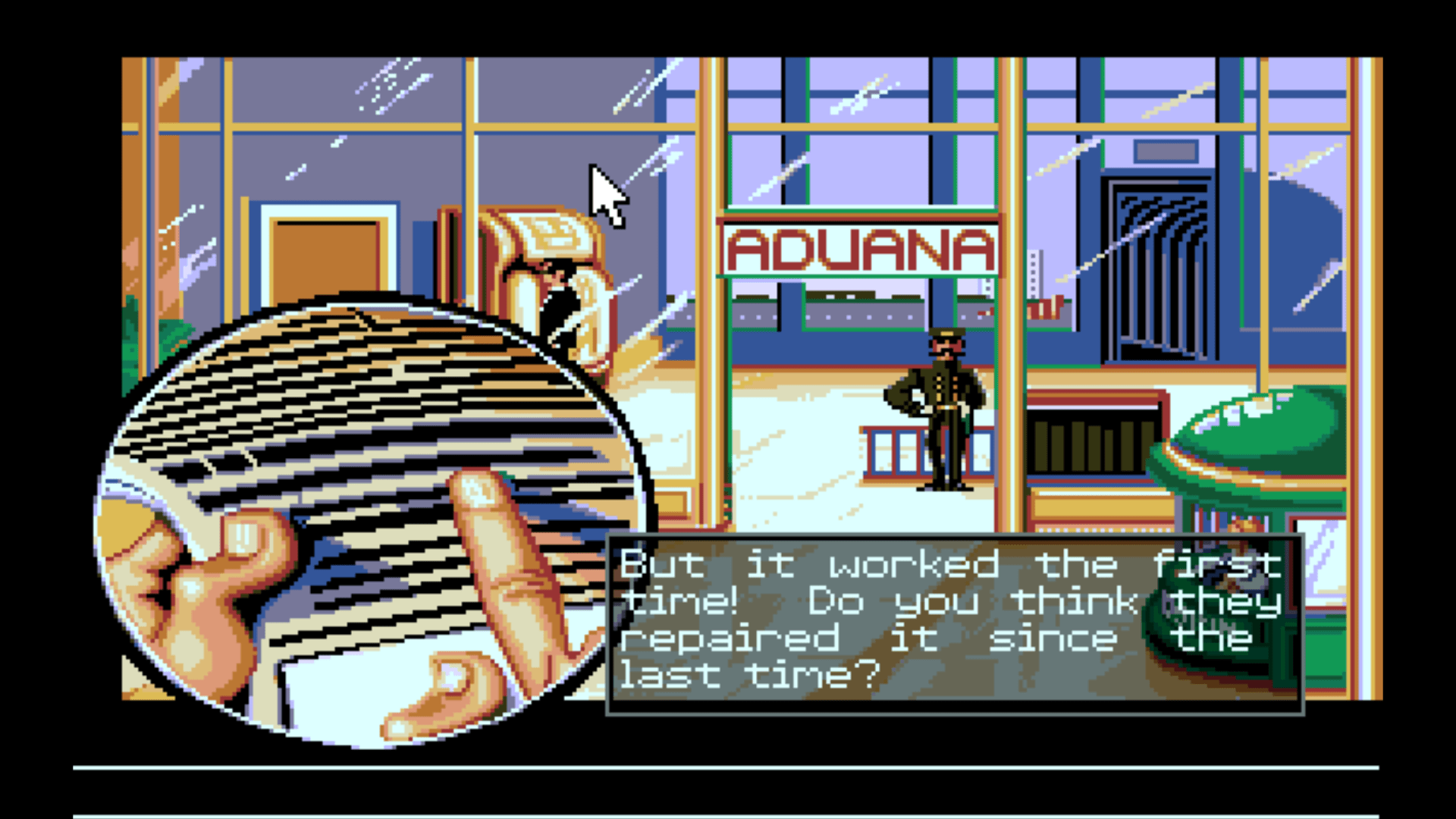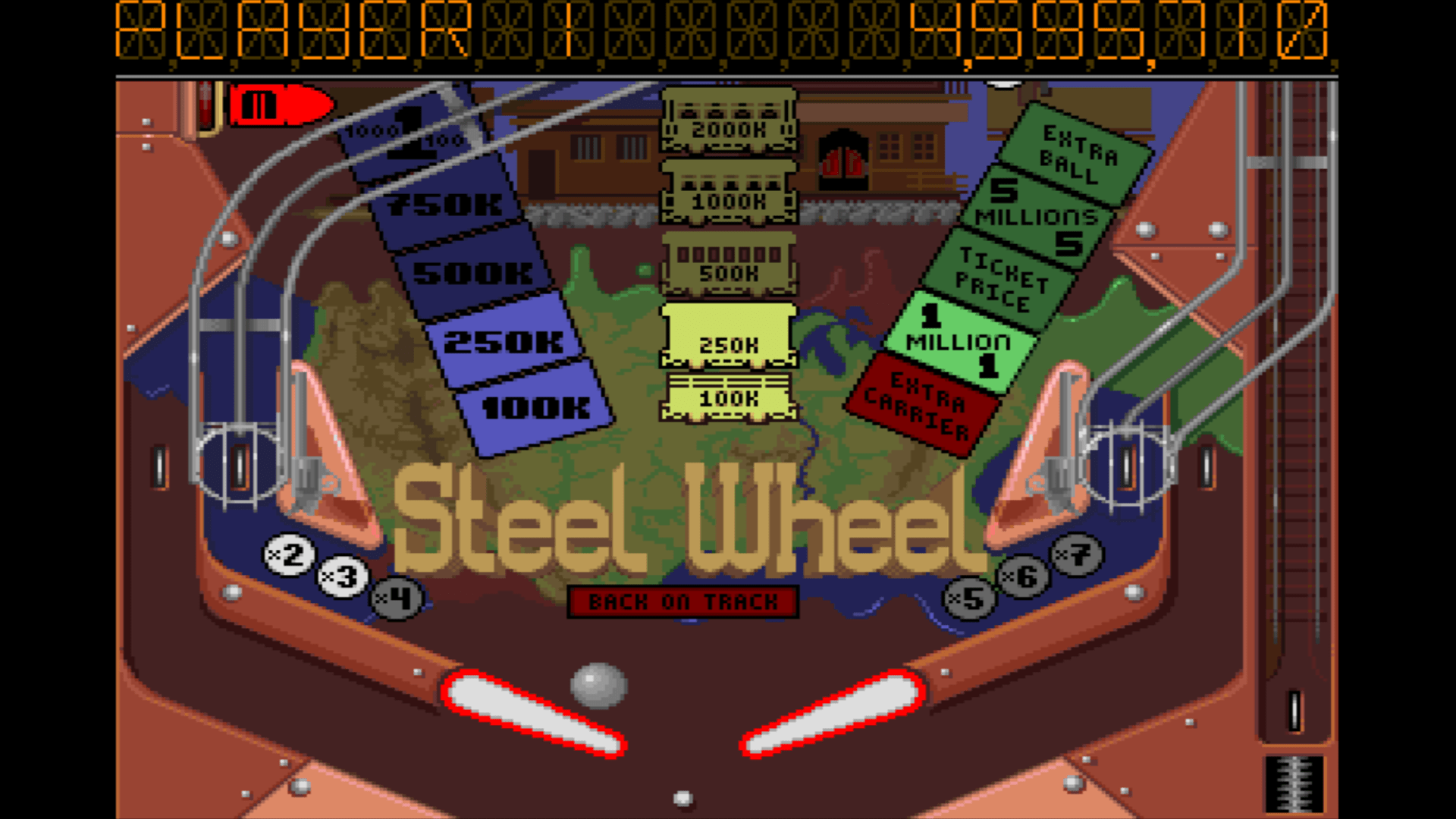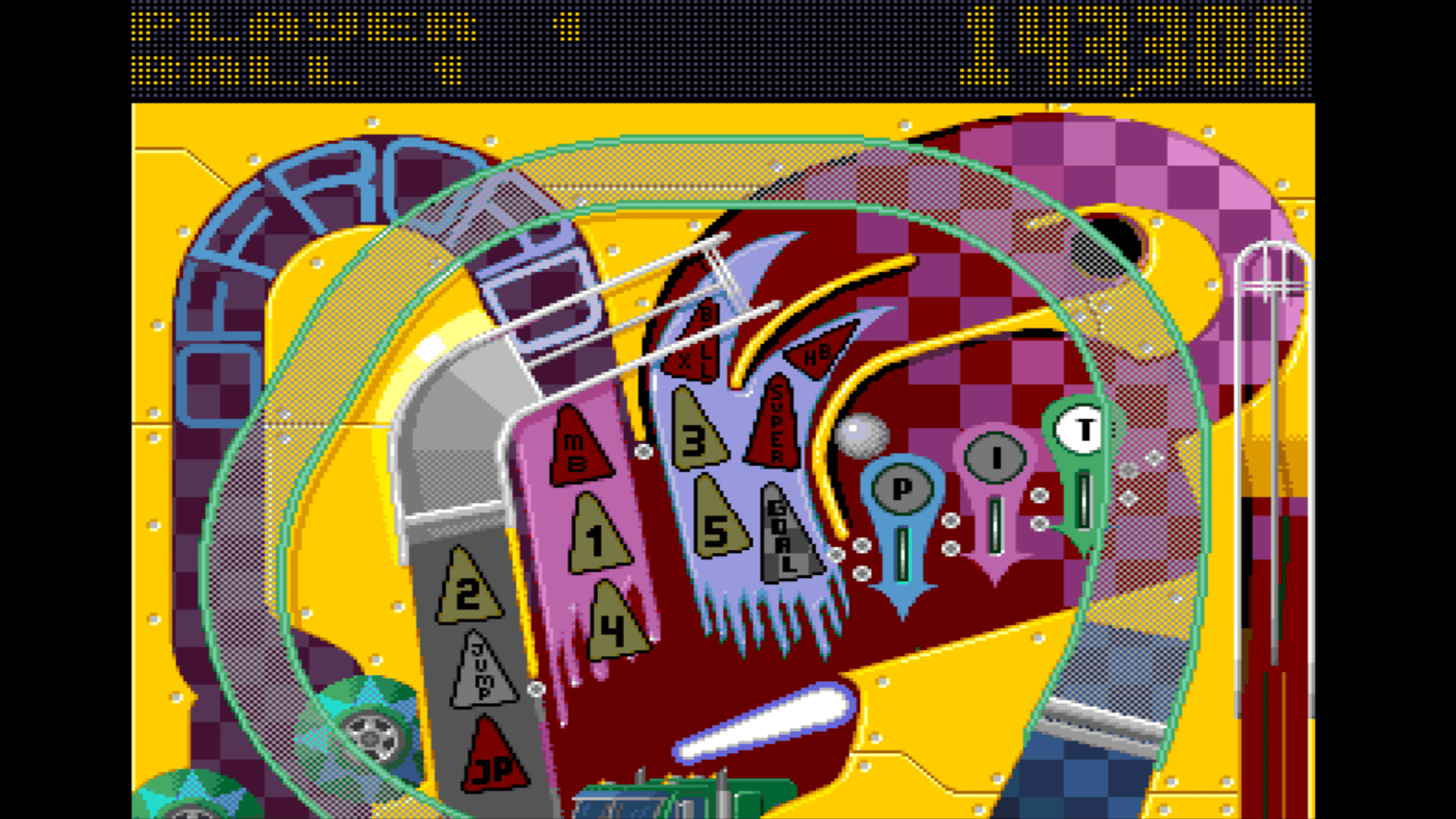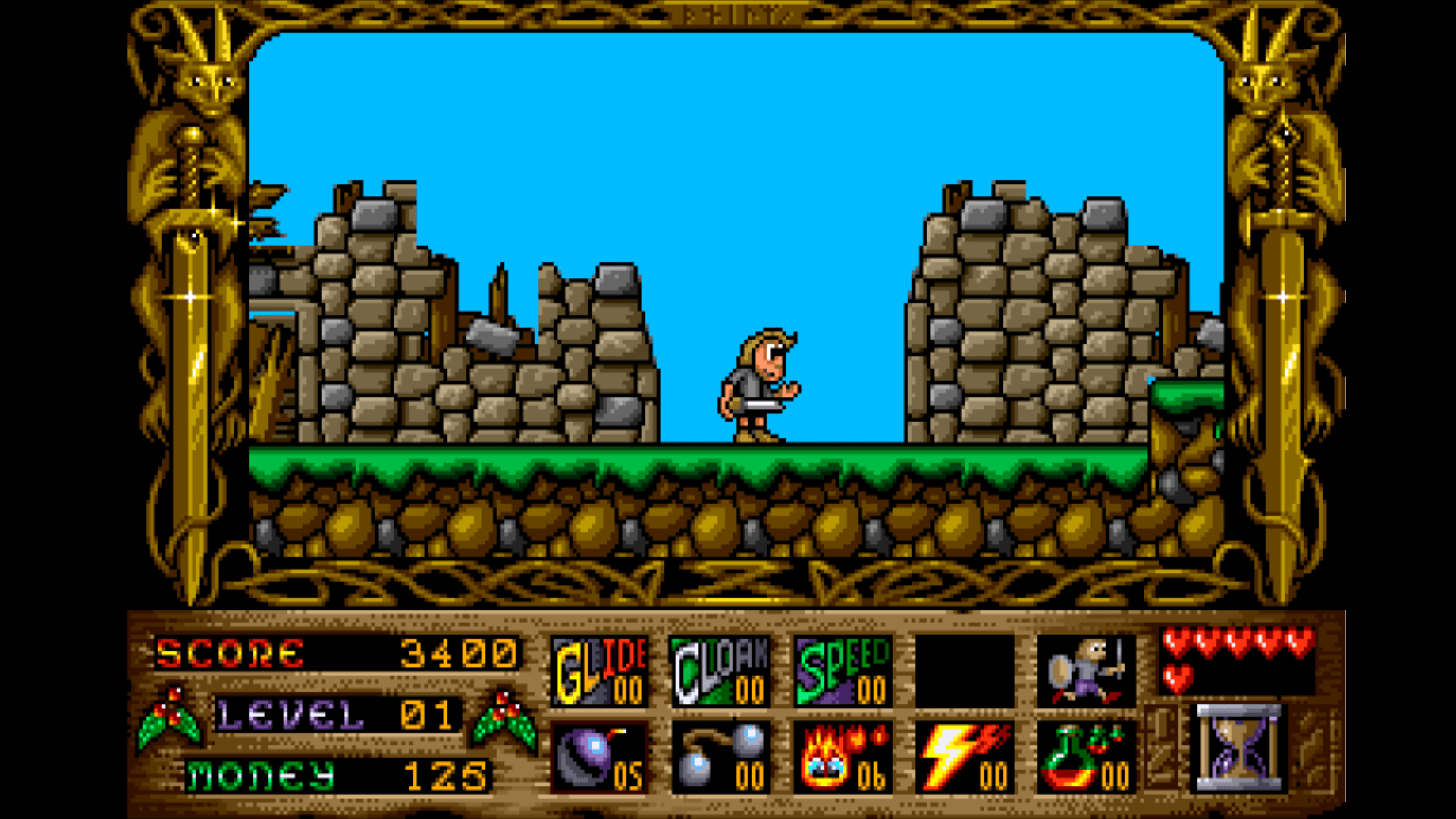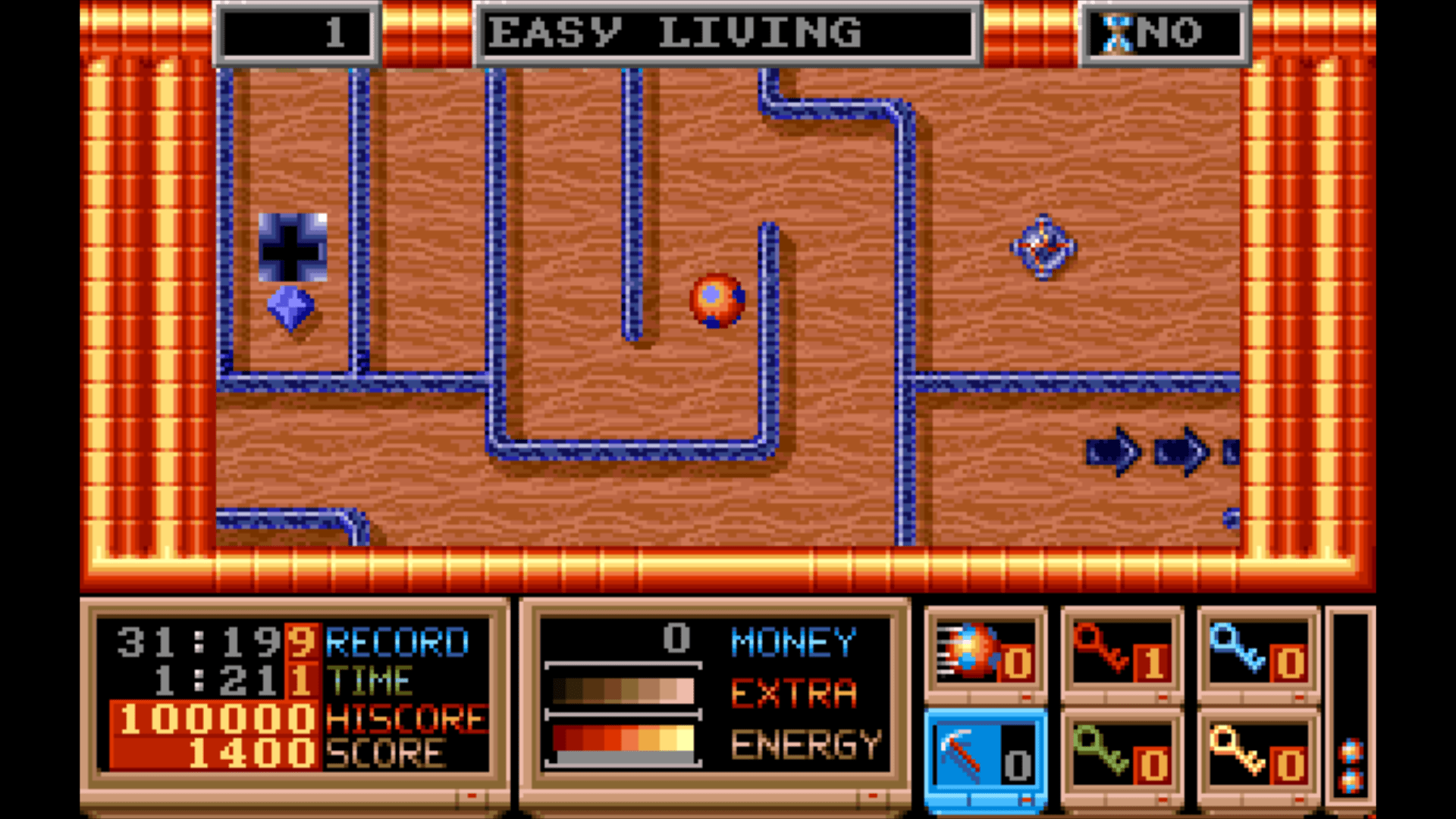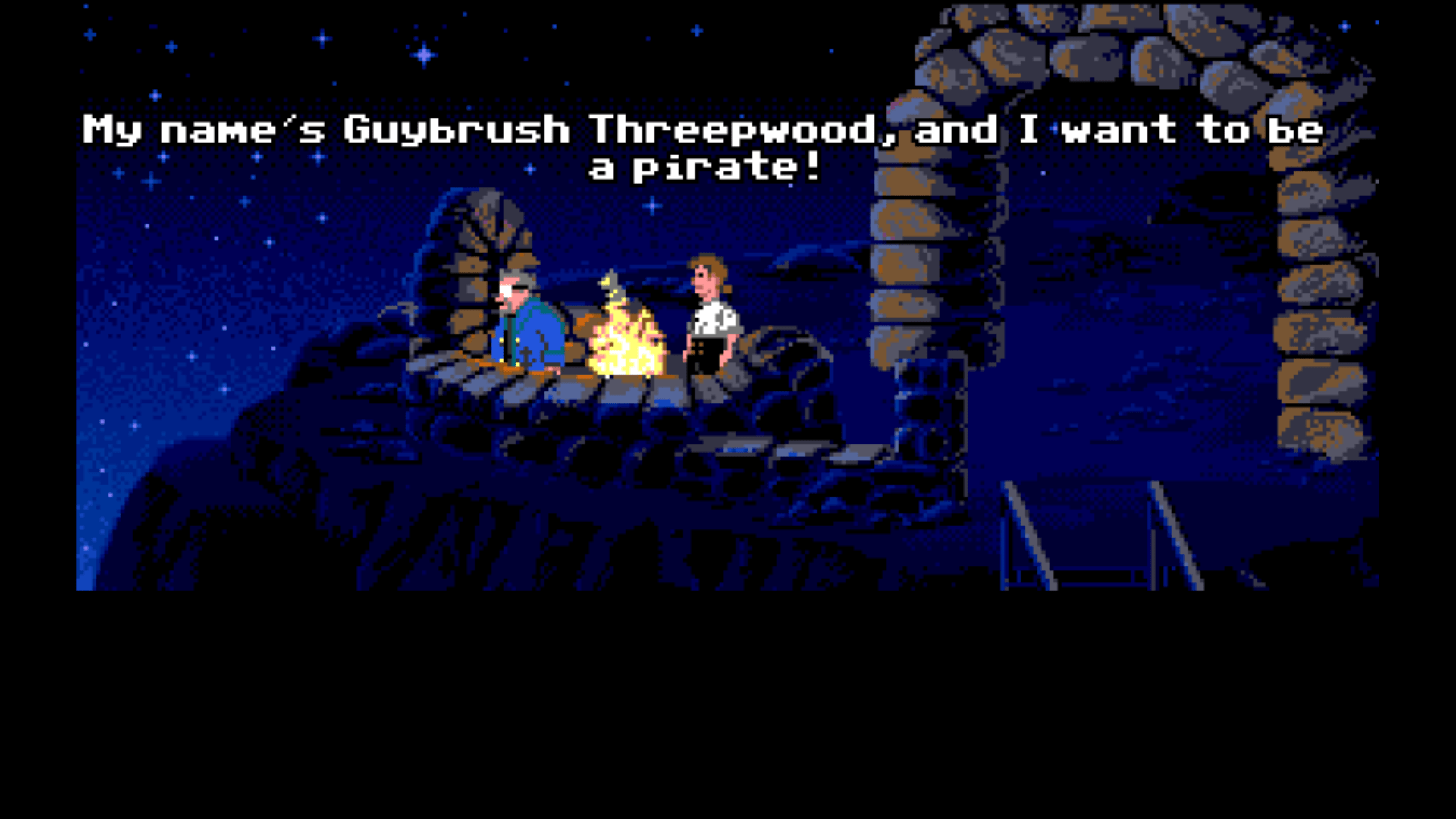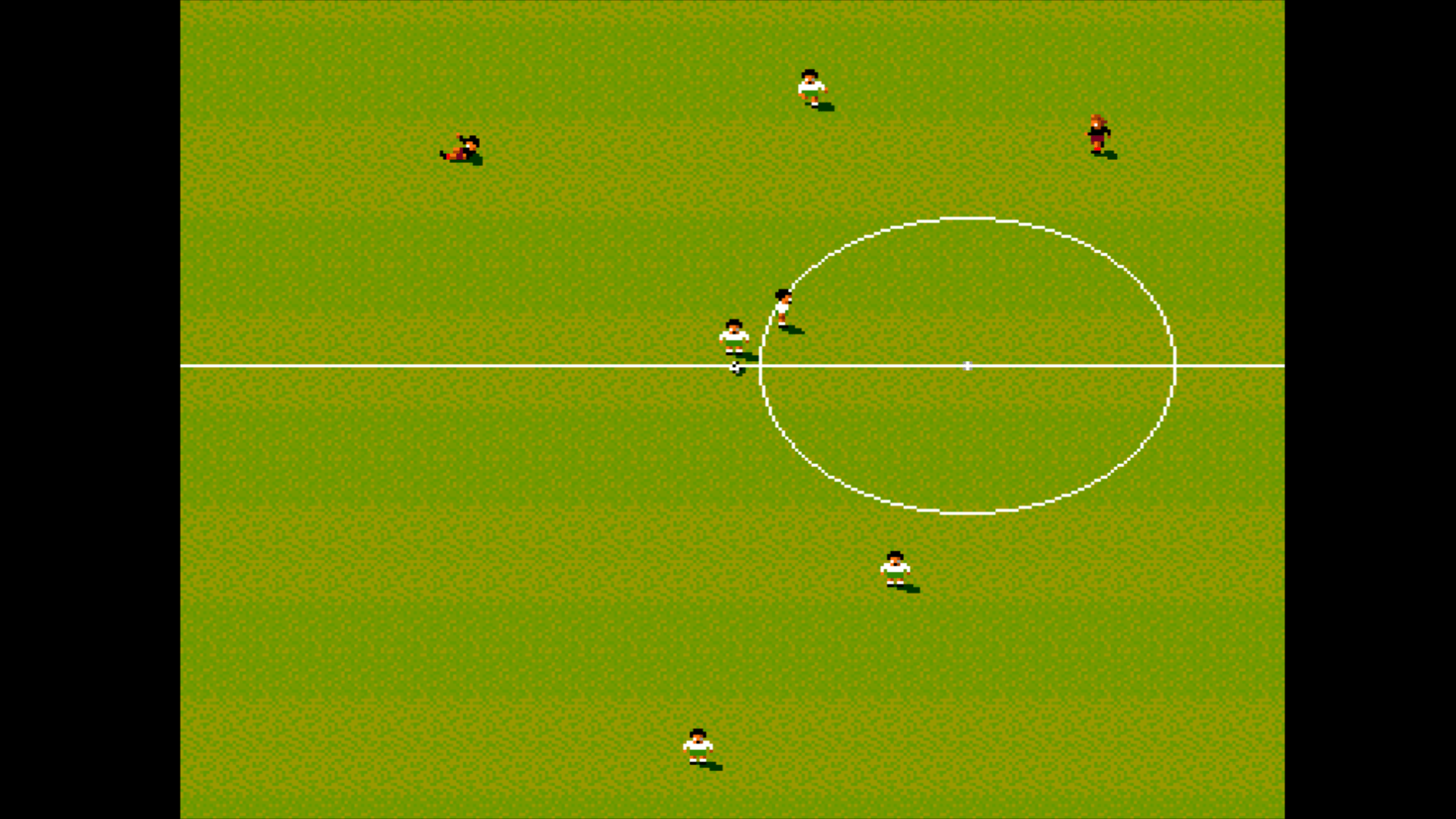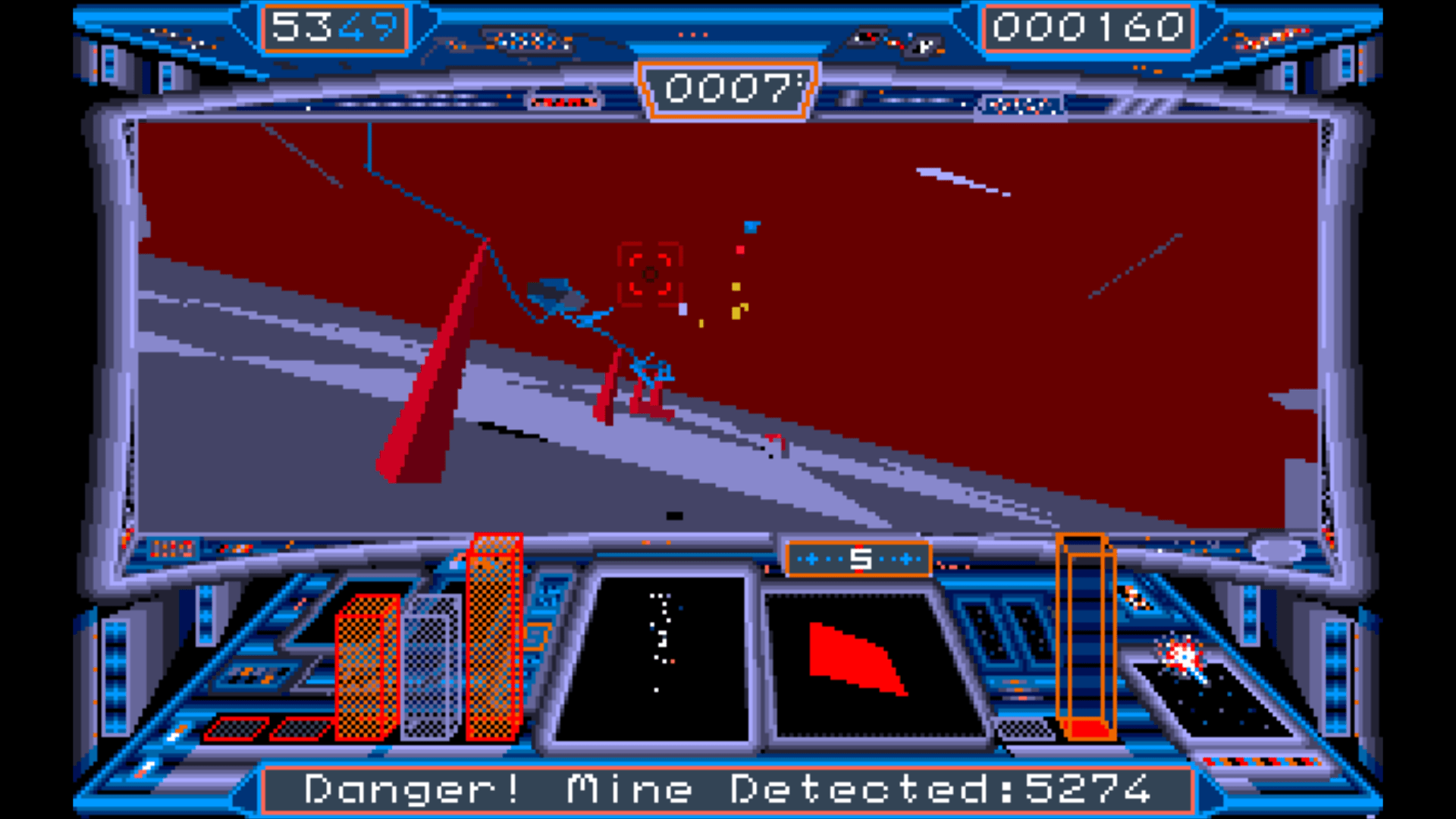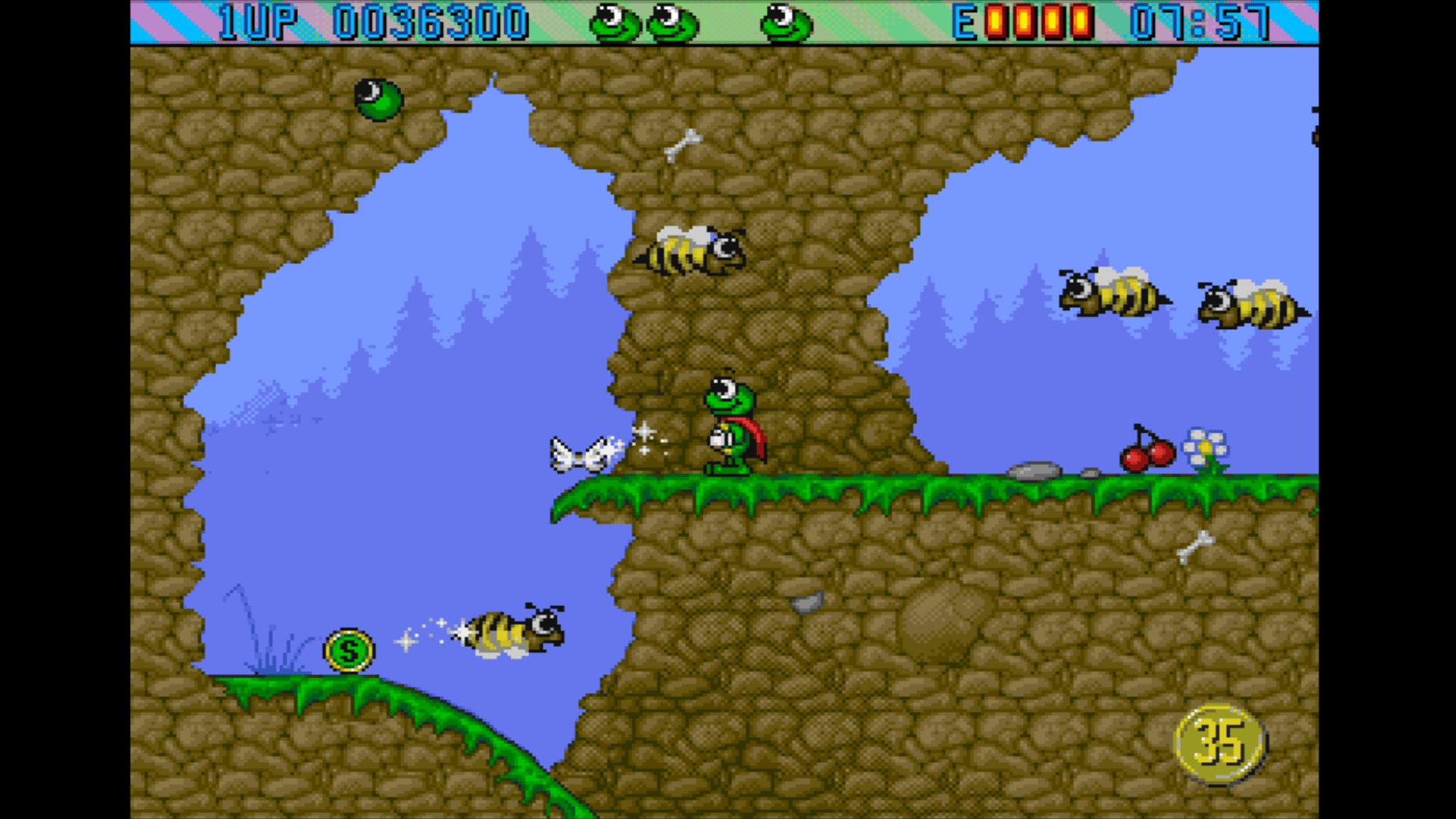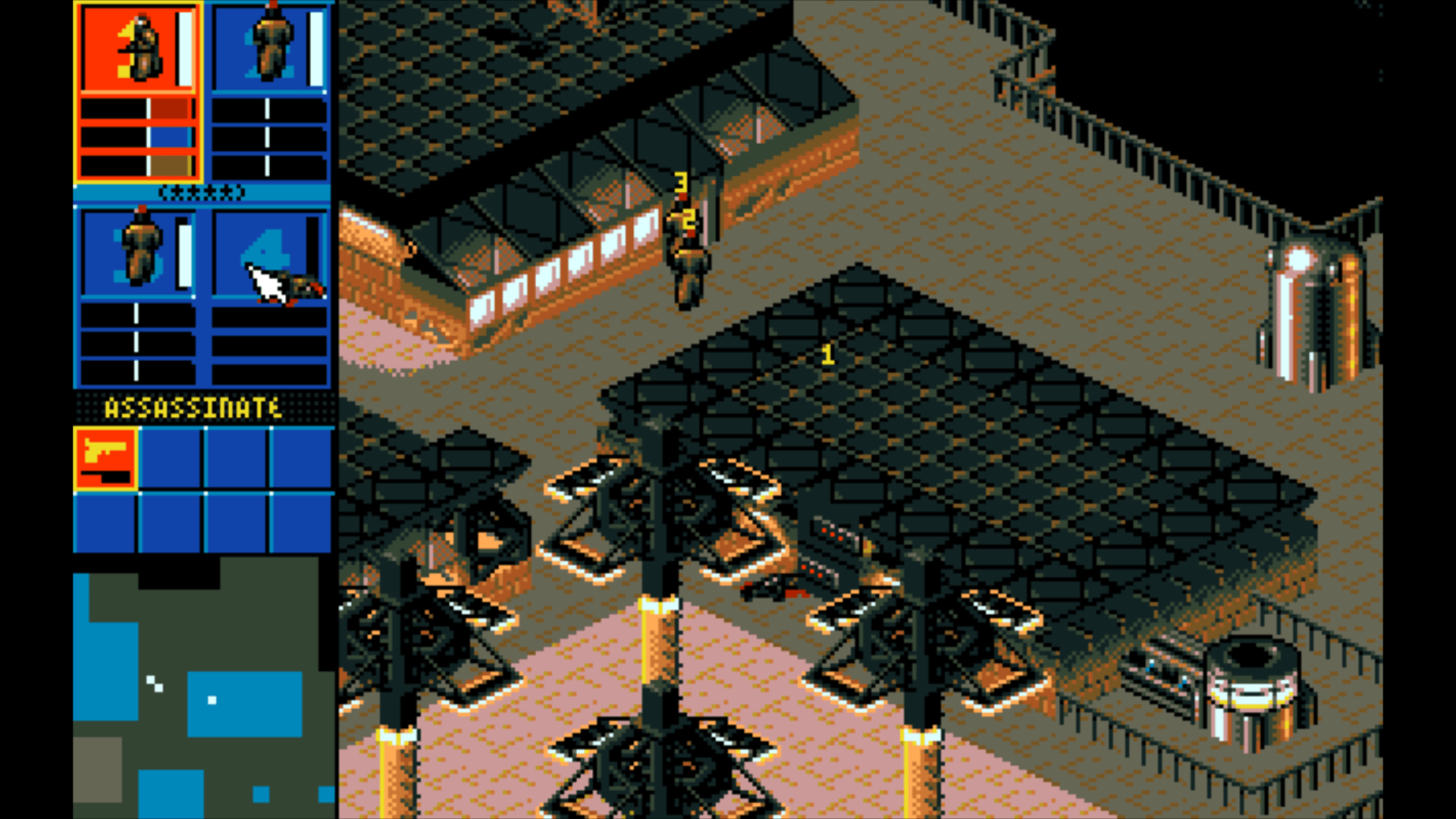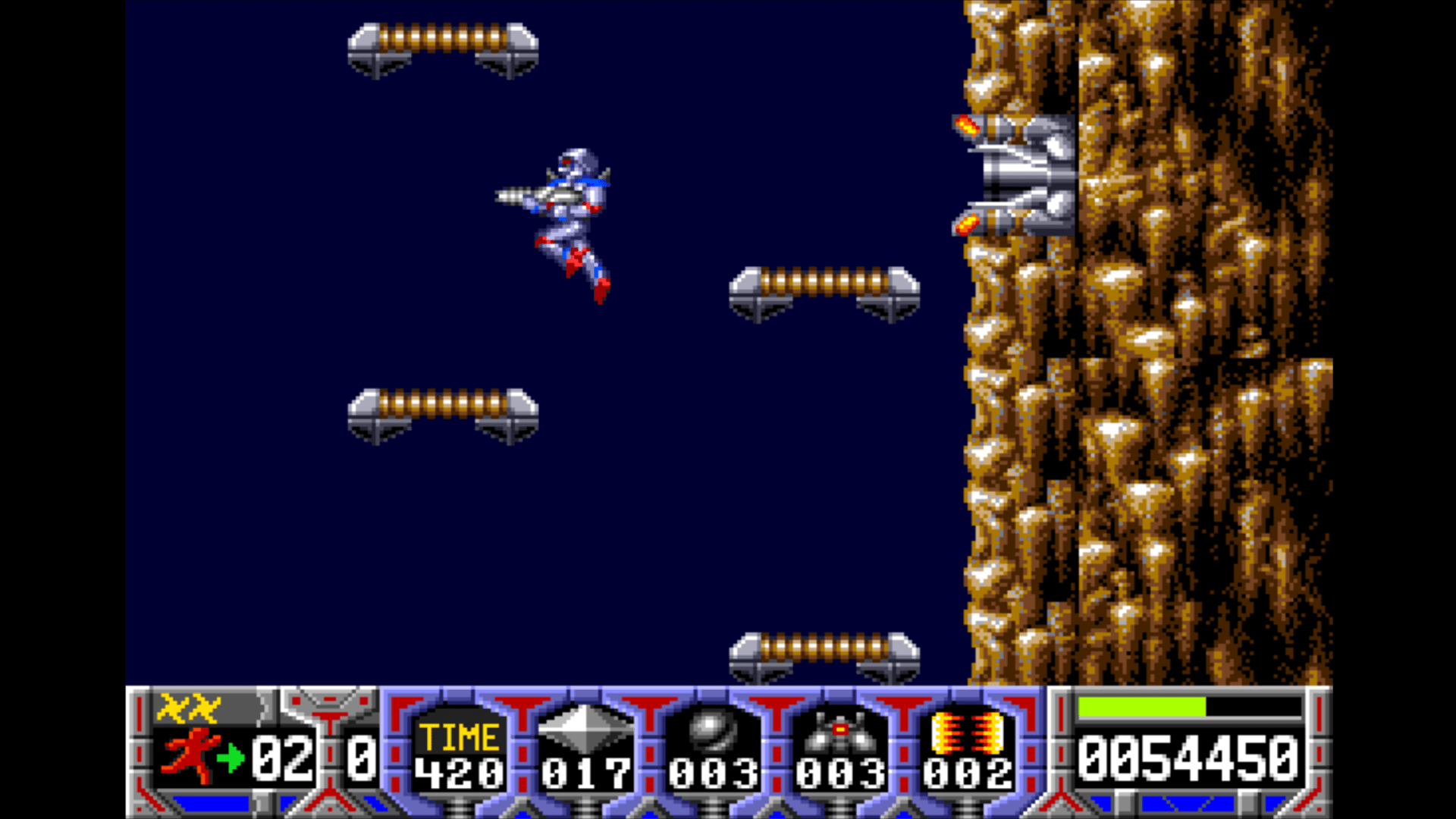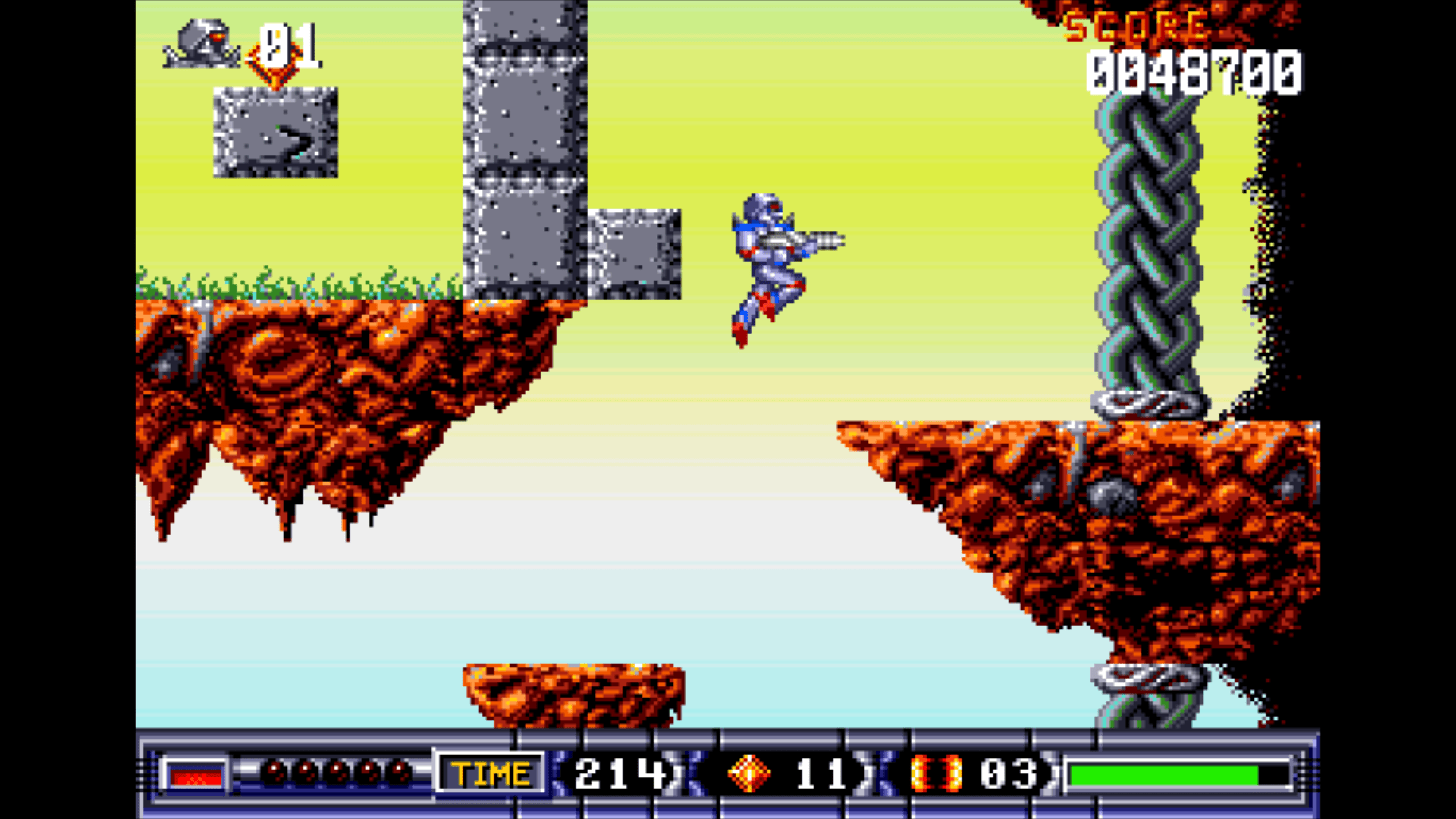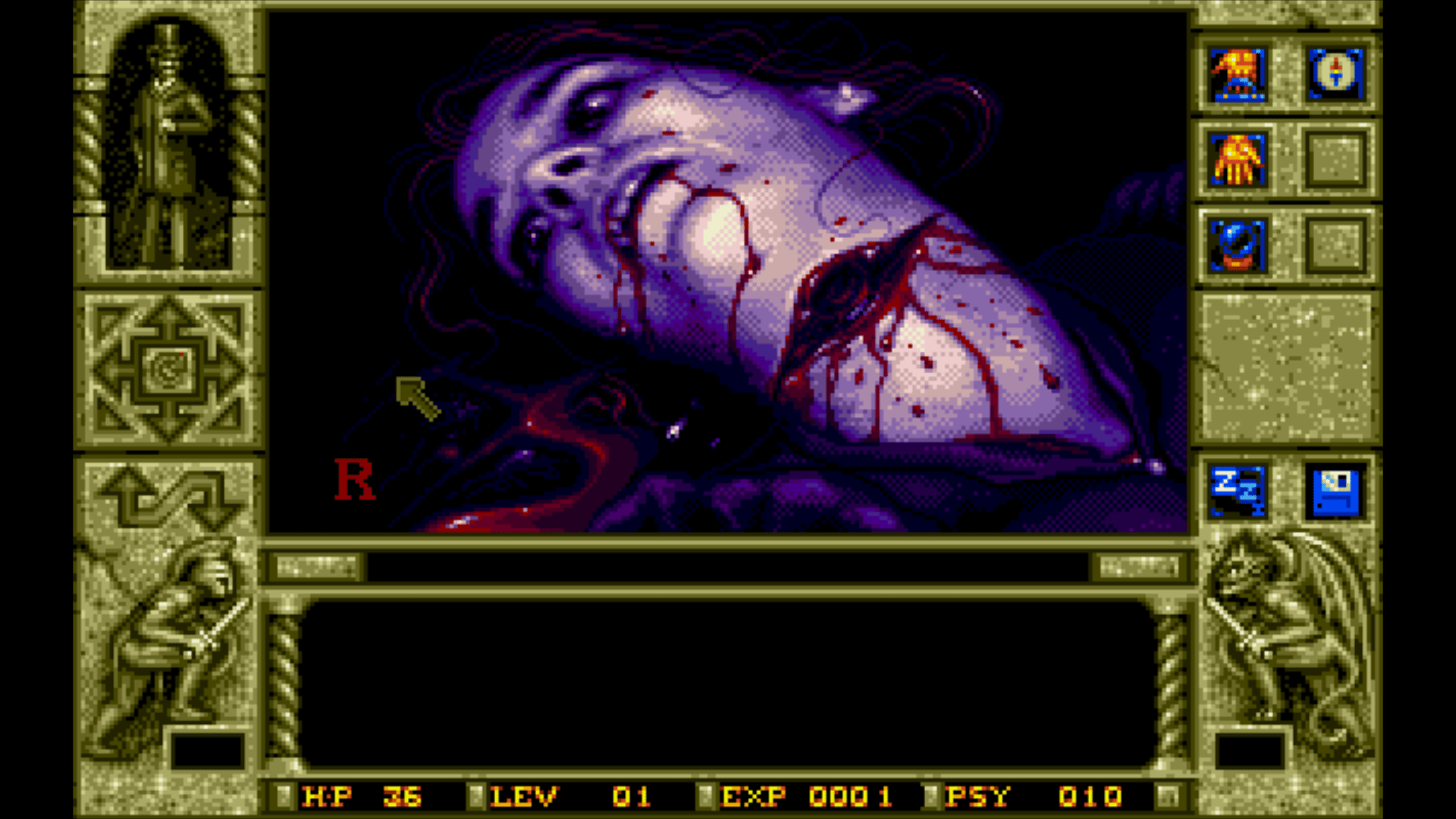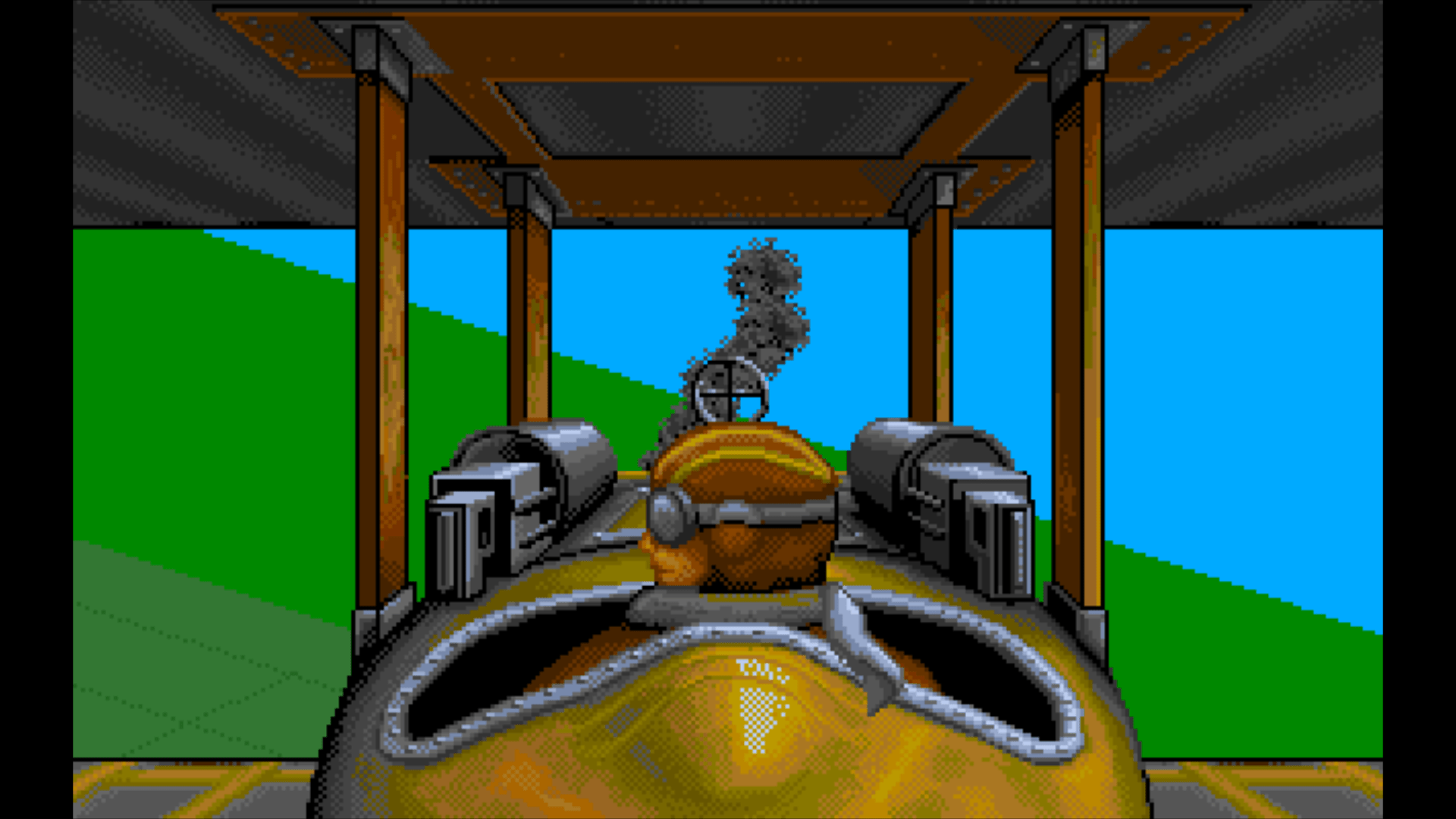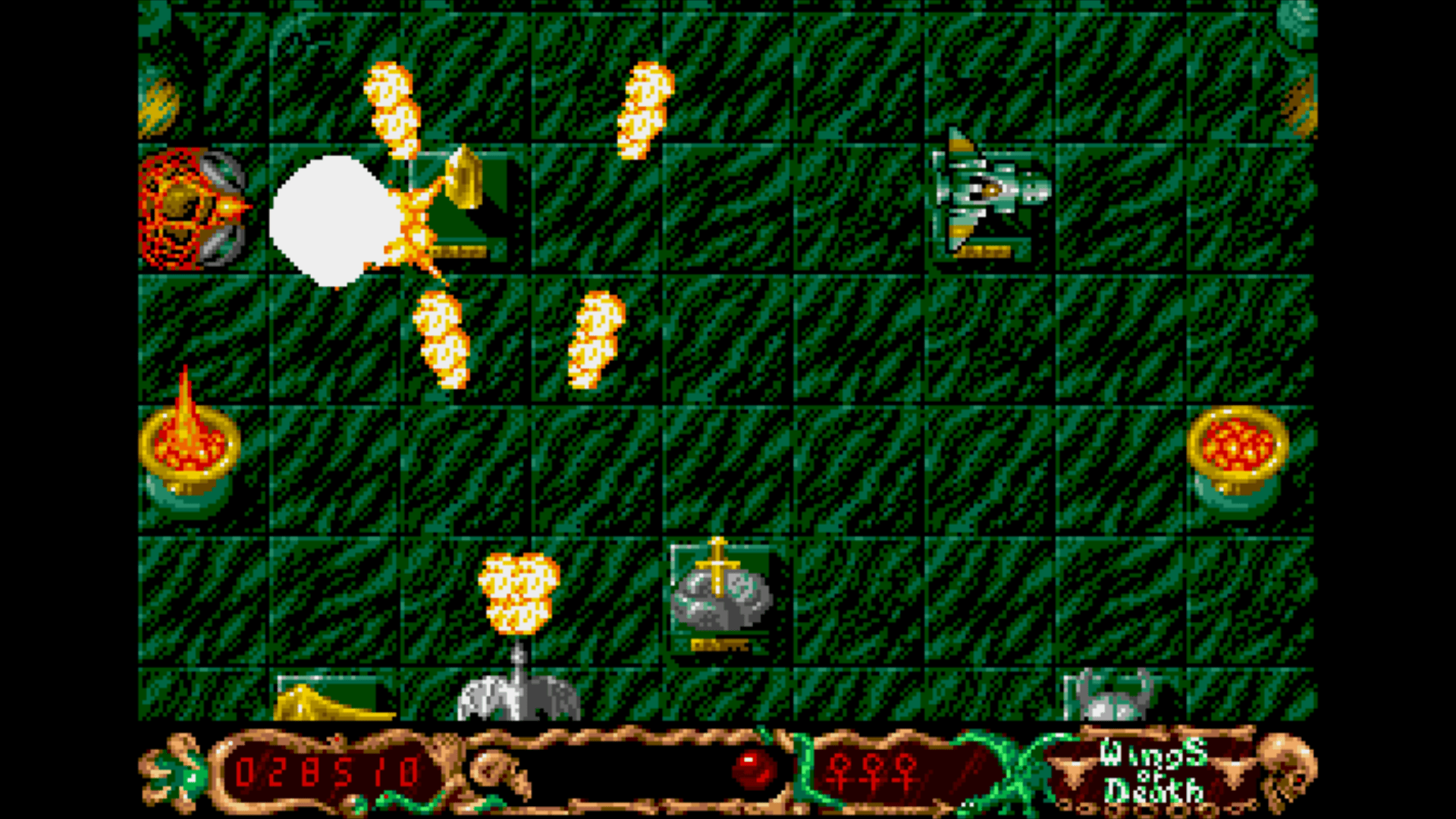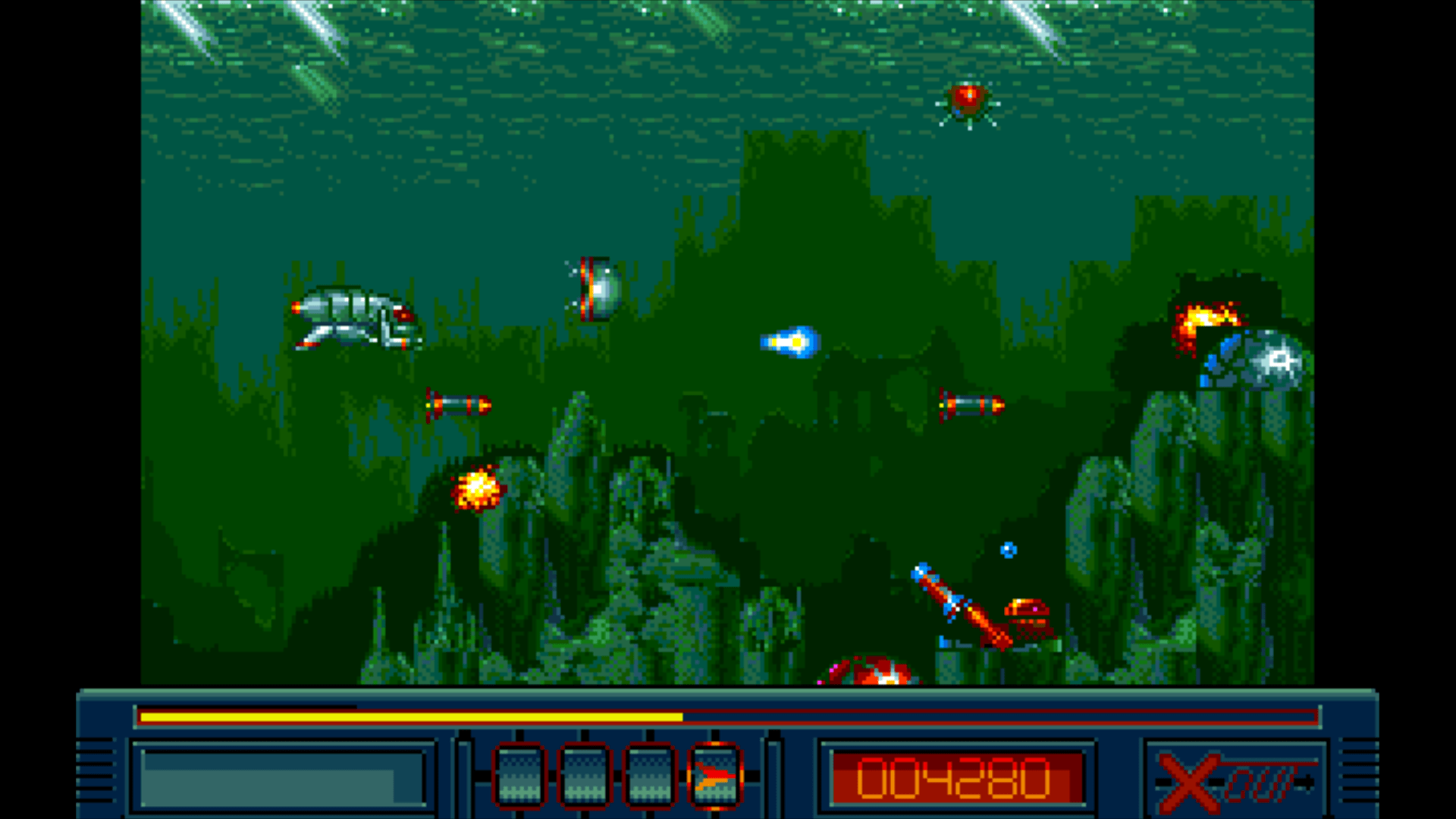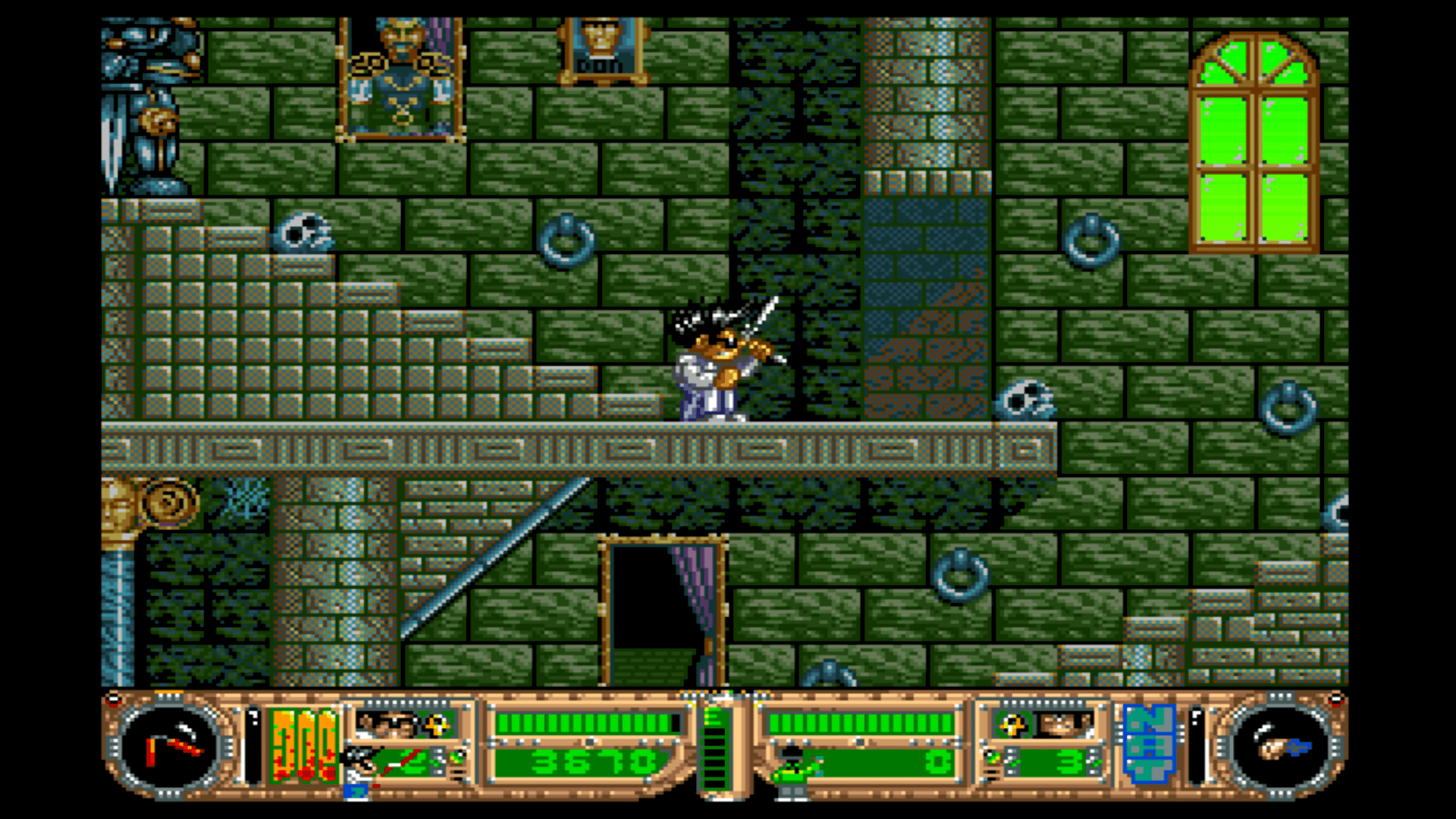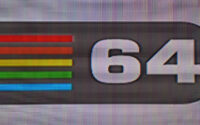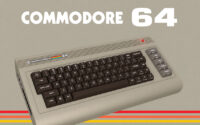Amiga Games – Part I: Hits
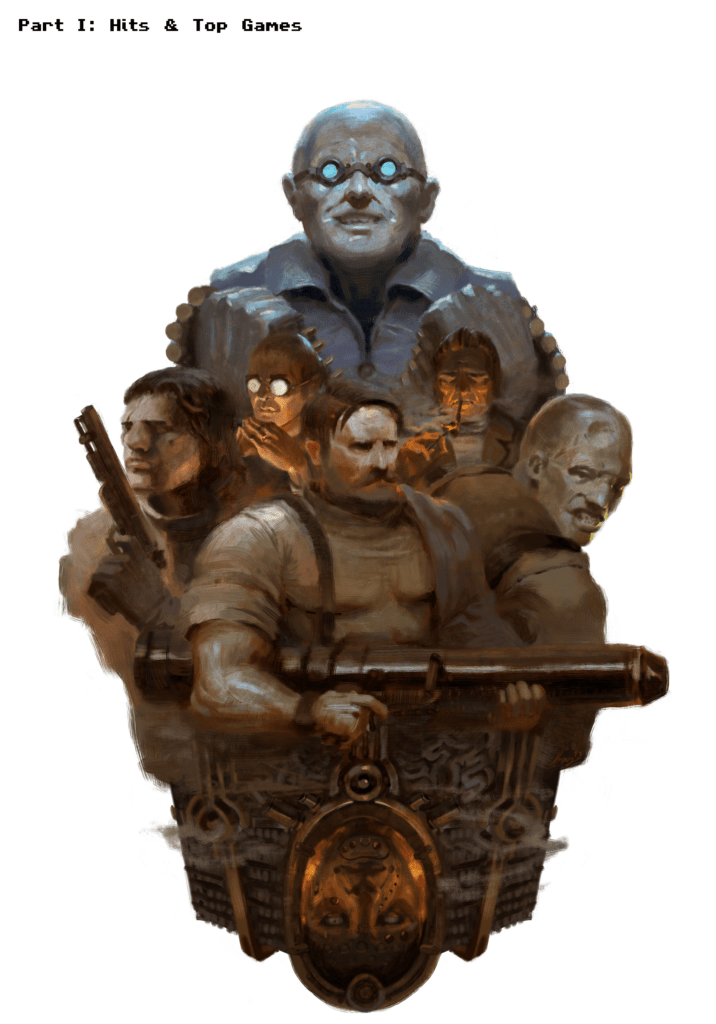
The dragging of the waters begins with a sort of “40 Hits & Top Games” in no other order than the alphabetical one. Picking out the absolute Best of the Best is basically impossible. (As it always is.) Sorting them is even harder. (All right, so what IS the best Amiga game ever?!) But these are some of the best ones in what’s probably the most predictable list in this series of articles – Especially if you’re familiar with some classic Amiga action. It may seem like some hard essentials are missing, but a whole bunch of them happens to be platform exclusives or widely appreciated cult classics, and might therefore appear in any of the subsequent four parts.
It’s like one of the Lemmings said: “Let’s go!”
1. Alien Breed (Team 17, 1991)
With a plot that takes the best bits from Alien and Aliens, complete with an atmospheric intro (Including Tobias Richter’s 3D animations.), this one- or simultaneous two-player game takes place at a space station that has stopped taking calls. Two tough guys decide to investigate. And would you believe that the multi-directional scrolling station is crawling with “H.R. Giger”-style extraterrestrials just waiting for the meat? You run around the halls and corridors, shoot at everything that moves, and try to figure out ways to get to the next level. Better weapons and tools can be purchased for credits at computer terminals, but you soon realize that blowing up the place will become a part of the mission at one point. The levels are connected via elevators. And many sections require key-cards for gaining access. In two-player mode, you stick to the same screen and look out for each other. (The game even has a “Credit Sharing” option.) You have energy-bars as well, so none of that “one-hit”-death shit. Alien Breed has all the characteristics of a typical Amiga-classic: Well programmed, good-looking, controls perfectly, and takes some time to complete. Including: A damn fine intro- / title-screen tune by Allister Brimble.
Note: And if you just can’t get enough, there is always the sequel: Alien Breed II: The Horror Continues (1993)… And Alien Breed: Tower Assault (1994)… And Alien Breed 3D (1995)… Which was followed by Alien Breed 3D II: Killing Grounds in 1996. (The two “3D”-games are exclusive to the Amiga.)
The original game was revived in the 2010s on Windows, PlayStation 3, and Xbox 360.
2. Amberstar (Thalion Software, 1992)
After Dragonflight, Thalion was ready to make The epic of Epic RPGs. A proof of their ambition was the fact that they were planning a trilogy of games. The story may not be the most original one in a Fantasy-setting, but what was 1992 A.D.? You set out to collect thirteen pieces of the Amberstar, which then can be used to perma-banish an evil bastard. (Who otherwise might make life shit for everybody.) The game begins with one lone character, but you can recruit five more as you travel around the realms of Lyramion. Amberstar took the best bits from the most popular RPGs at the time and refined them as much as technology allowed. The game combines the top-down “Ultima”-perspective with first person POV in towns and dungeons. Why change something that works so well? Amberstar pretty much contains everything that you’d ever require from a game like this. It’s also quite merciless on other fronts. (The game doesn’t have a “perma-death” mechanic, but the “next” worst thing, I guess…?) But it’s mostly an amazingly good and long game with plenty of features and tons of stuff beneath the surface. And Jochen Hippel’s score is of Class A musicianship.
Note: Followed by Ambermoon (1993), which is an Amiga exclusive. Dragonflight was released in 1990.
3. Another World (Delphine Software, 1991)
Scientist Lester Knight Chaykin is conducting a particle acceleration experiment, which naturally doesn’t go as planned. At least not when electricity is involved. He teleports both himself and his desk into a lake somewhere. After swimming up and away from some tentacles, Lester notices that he has traveled to… Another World…! This is a flip-screen arcade adventure with no text or (terrestrial) dialogue. Besides platform jumping, shooting, and swimming, there’s a story told through the action and short cinematic sequences. What’s extraordinary about Another World is the vector-graphics based engine. The animations render smoothly and it gives the game its unique art-style. It’s a partially tricky game, so there’s a lot of classic trial and error and going on. If you know what to do, it’s also quite a short game that you run through in plus minus twenty-five minutes. But since this essentially was a one-man project by Éric Chahi, it’s just unfair to criticize the game for its length. It took closer to two years to develop, and that includes everything. (Except Jean-François Freitas did the music and some sound effects.) This was a very atypical game for Delphine Software at the time, but its influence grew heavy.
4. Awesome (Psygnosis, 1990)
This is where the name “Psygnosis” seriously become synonymous with even higher quality. Awesome is a space Shooter, but it’s one of the more varied ones that you can play on the Amiga. The game has no less than five different sections where you blast everything into atoms. In the first two top-down sections, your space-ship is in the middle of the screen and you rotate the entire playing area around you. You have to dodge enemies, destroy them, and collect orbs that they leave behind. (That on-screen radar is very helpful.) Once everything is dust, you warp to the next part. (Which is an asteroid belt.) Between these sections, you can either power up your shield or cannon depending on your energy levels. The perspective then shifts to a view from behind as you fly to the nearest planet. A big monster “stands” in your “way”, and on the top-down surface, you have to shoot more ships, land, and run towards a station on foot. At the station, you get to buy stuff with the orbs that you have collected. And repeat. It’s non-stop action. Developer Reflections were on a roll here. And Tim Wright’s soundtrack is fuckin’ spectacular…!
Note: The original (boxed) game had an intro on a separate disc (Like quite a few of Psygnosis’ games did.), but it was never… “Future proofed”… All the cracked versions come on two discs and hence miss the intro.
5. Cadaver (Image Works, 1990)
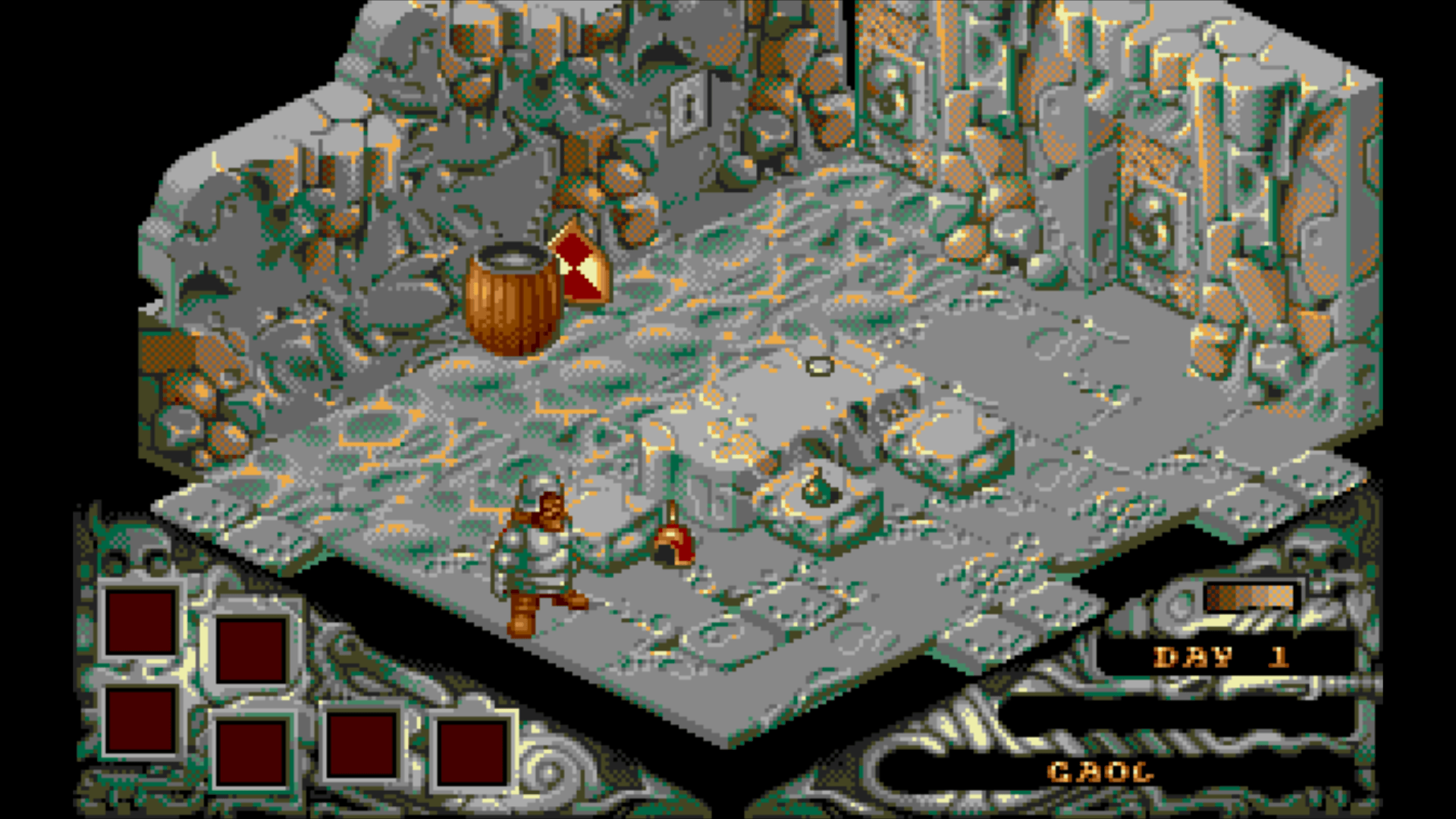
Mix a slightly more accessible Head Over Heels with a fantasy-style setting and tons of environmental puzzles, and you could get Bitmap Brothers’ Cadaver. Karadoc the greedy dwarf has infiltrated Castle Wulf from below. His only real goal is to get rich… And to kill Dianos the Necromancer. But he’s hiding five levels away. This flip-screen arcade adventure is from a time when “everything” still was possible on the Amiga. How the game operates involves a lot of clever ideas and functions for interacting with the surroundings and using the objects. (For example, to hack a stone wall to pieces, you simply place a pick-axe next to the wall and attempt to walk through it.) And it works really well, which is good since this is a pretty long game. It easily takes several hours to go through even if you know what to do and where to go. Cadaver has the visual style that would become Bitmap Brothers’ trademark. And with such a functional game, it would have been a shame had there not been any expansions. So in 1991, “The Payoff” was released with four more huge levels to explore… So what’s missing? Atmospheric in-game music, of course…!
Note: And if you just crave more Cadaver, there are always the demo-levels that were sent to the gaming magazines to crank up the hype. (Three of those were produced in total.)
6. Cannon Fodder (Virgin Interactive Entertainment, 1993)
“War has never been so much fun.” This was Sensible Software at the top after making many enjoyable and innovative games for so many years. While this top-down military shooter, with equal doses of silliness and seriousness, is one playable and ridiculously addictive number, it didn’t come without a tail of controversy. Yeah. War isn’t supposed to be fun. But as always, this is a video game. It begins with that iconic intro and catchy song (That’s really anti-war.), and then, you start sending soldiers to the multi-directional push-scrolling battlefields where the the game’s 23 missions take place. The thing is that when your grunts die, their unmarked graves appear on the hill behind the line of fresh recruits. If nothing, it conveys the message about how meaningless the whole scenario is. Except it is fun, because… It’s a video game… The developers got it all right with this game. It’s easy to control, equally easy to get the hang of, and it has that “Just one more round”-addictiveness. And just like the best games, you gradually get the gameplay mechanics down before the factor of challenge kicks in… And meanwhile, those graves on the hill keep growing in number…
Note: Followed by Cannon Fodder 2 in 1995, but it’s more like Old School DLC than a “new” game… Still just as fun, though…
7. Carrier Command (Rainbird, 1988)
The conflicts in the 21st century are all about fuel. In an archipelago “somewhere”, a network of fuel supplies needs to expand and stay under control while terrorists try to destroy everything. And that’s also where defense comes into play. To take over the islands, you have Manta (air-crafts) and Walrus (amphibious tanks) on your carrier. This “taking over” includes destruction of the enemy installations including the Command Center. In the heat of the action, your crafts get damaged, so they need to be repaired back at the carrier. And the carrier gets damaged as well… And vehicles need refueling… The game might take a while to get going, but once you have the menus under control, things pick up considerably. The full 3D vector-graphics make this game a very immersive and captivating experience. The visuals are rendered smoothly and do the job very well. Carrier Command includes an “Action”- and a “Strategy” game. Everything can be controlled with a Joystick, but it’s no advantageous alternative to the combination of the mouse controls and the keyboard shortcuts. The only thing that’s lacking is sound. There should have been more ambient sound effects to counter the occasional long moments of silence.
8. The Chaos Engine (Renegade Software, 1993)
Mercenary, Thug, Navvie, Preacher, Brigand, and Gentleman. Two from this gang (You and a CPU-controlled character or a second player in simultaneous co-op mode.) set out to destroy this “Chaos Engine” that materialized after an experiment with time and space went wrong. (Will they ever learn?) Bitmap Brothers’ top-down multi-directional scrolling Shoot- and Collect ‘Em-Up takes you through four Steampunk-style levels with four sections in each. And would you believe that each and every one of them are populated by monstrosities and hideous mutants? (Everything from frogs to gigantic human hands.) Regardless of if you play with the Amiga or a friend, it’s an action-packed, exciting, and fun ride. The game has a very iconic and identifiable look, and its soundtrack is very much a product of the early 90s. (Meaning: It has some of that “Acid House”-vibe.) The Chaos Engine also incorporates RPG-elements as each character has his specialty, strength, and weakness. The money that you collect from vaporized monsters is unsurprisingly used between worlds where you can upgrade either weapons or characteristics. The game’s controls are excellent, and the overall design is of very high quality. One (minor) downside would be that there aren’t more or bigger worlds.
Note: The 1996 sequel went in an entirely different direction and utilized death matches and split-screen action. Both Chaos Engine-games also support the AGA chipset.
9. Cruise For A Corpse (Delphine Software, 1991)
Delphine Software’s third Point ‘n Click-adventure after Future Wars and Operation Stealth is arguably the best of all three, even if they’re all stellar when it comes to storytelling, visuals, atmosphere, puzzles, and music. This is more like an Agatha Christie-style Whodunit set on a cruise. Wealthy S.O.B. Niklos Karaboudjan has been murdered, which means that the killer is one of the passengers. As detective Raoul Dusentier, you have to solve the crime before you arrive and the murderer gets away. You walk around the flip-screen ship, look for clues, talk to people, and try to figure out a strong enough motive… For each clue or moment of progress, the clock moves ten minutes ahead. This means that you can get stuck, but also that you can’t “fail” the investigation. (Until the classic confrontation at the end, that is.) The game looks absolutely delightful and old-fashioned. Using vector-graphics for Dusentier makes him scale proportionally against the first-rate backdrops. But a Delphine-game wouldn’t be the same without a soundtrack by Maestro Jean Baudlot. (This one is suitably piano-based.) Cruise takes up five discs (Including the intro.), so there’s plenty to discover and even more to figure out………… Top game all through…
Note: Future Wars and Operation Stealth are of course in this list as well. (No. 15 and 25 respectively.)
10. Dungeon Master (FTL Games, 1988)
The natural step for “Bard’s Tale”-games was if they could be played in real-time instead of utilizing classic turn-based gameplay. Dungeon Master, which can be seen as the template for later games like Eye Of The Beholder, was the first one out. Instead of creating your characters, you walk around in the Hall Of Champions and either resurrect and reincarnate various people who you can name. Steps lead down to the first dungeon, and the adventure can therefore commence. You can interact with the gameplay window, e.g., push buttons or pick up objects. And character sheets are only one click away. You will of course need to come up with good old Guerrilla-style strategies for your party of four whilst running around fighting… Or running away from enemies that are way tougher than you. But once you learn the genuine art of kicking ass, you’re well on your way. With some classic mechanics, this is as full-fledged of an RPG as you could ever wish for from this era. And if you are a fan of the genre, there is no reason to overlook it – No matter how many years pass. Because even the graphics have aged with grace.
Note: Followed by the first (and last) expansion set Chaos Strikes Back in 1989, and Dungeon Master II: The Legend Of Skullkeep in 1993. Dungeon Master Nexus (1998) was, curiously enough, a SEGA Saturn exclusive.
11. Elvira: Mistress Of The Dark (Horror Soft, 1990)
The purest horror games on this platform often came from Horror Soft, and they set the standard pretty high after Personal Nightmare. This time, they got the star power from Elvira herself and based the game around the 1988 movie… Except this isn’t a humorous game in the slightest. The only similarity is that Elvira has inherited a residence. In the game, it’s a castle that once belonged to her ancestor Emelda… Who just happened to be a devil-worshiping witch. The place is now haunted as the old ghouls and ghosts prepare for Emelda’s return… The player of this Point ‘n Click-adventure has to help Elvira get rid of the scum. Everyone who isn’t Elvira is trying to kill you in one way or another, and the gory aftermath of your demise is always shown as pictures. There are plenty of puzzles to solve, and it’s quite easy to get stuck and killed in some “dead end”. Luckily, there’s always Elvira who can cook up some spells for you. The atmosphere is air-tight and genuine from the first screen to the last. There are plenty of gruesome visuals throughout and they’re as effective as in the finest “B” (best) movies.
Note: I seriously would like to know how a part from Seppo “Fleshbrain” Hurme’s tune “Polarchase” ended up in this game. Especially since the music was made for Demo group Crusaders’ “Eurochart #3” around the same time.
Elvira: Mistress Of The Dark was followed by Elvira II: The Jaws Of Cerberus in 1992. It goes without saying that it’s a must if you loved the original.
12. Eye Of The Beholder (SSI, 1991)
“Buy a P.C. instead!”, shouted (some of) the magazines before the Amiga-version hit the market. Absolutely. “Everybody” drooled. Westwood’s RPG looked like a goddamned dream-good game in every way… You create a quartet of adventurers before investigating some evil shit below the city of Waterdeep. But the Beholder known as Xanathar traps the gang in the sewers, so the only way is down… And when you’re trapped in twelve levels of dungeons in Forgotten Realms, you know you’re in trouble. Luckily, you can get two additional NPCs to join your team of hard-asses. Eye Of The Beholder is basically a quintessential 16-bit RPG with a standard-setting interface designed around mouse controls. (Although you can use the keyboard too.) Player inventories and sub menus are never more than one or two clicks away. The real-time combat system is near-perfect. Sure, the quest turns into a nightmare the moment you start struggling with killing the armies of monstrous swine, but the feeling after each bittersweet victory is so rewarding… What gives the game its character is how it plays and how it’s constructed. (Although the original features help too, along with the amazing atmosphere.) And it runs well on a stock Amiga…
Note: … So there IS no need to buy a P.C. instead…! Especially not after 2006 when the game was re-made to take advantage of AGA graphics in machines like the Amiga 1200. That means that you get the characteristic VGA-quality visuals combined with the better sound of the Amiga-port.
13. Eye Of The Beholder II: The Legend Of Darkmoon (SSI, 1992)
And what’s better than one “Eye Of The Beholder”-game? Okay, so that’s obvious, and fans were overjoyed. After loading the game, you can import your old heroes from the original. It’s like the perfect RPG-fix. And during most parts of this “20-something levels”-big game, it all plays like the same good dream as the predecessor. This time, the party investigates the unbelievably suspicious temple of Darkmoon just beyond the forest. The two smiling clerics who greet you look as trustworthy as any cult-leaders, and it just so happens that Darkmoon is the front for some really bad shit. The adventure begins when you have slaughtered the clerics… So. Nothing to complain about as far as the core game goes… At least not on a faster machine than ye olde A500. Because you’ll notice some performance issues when there’s a lot happening on screen. When the frame practically freezes temporarily during busy fights, it’s easy to guess that it’ll negatively affect the gameplay. It’s usually no disaster, but it’s quite irritating. And assumably because Commodore’s technology couldn’t keep up anymore, the third game, “Assault On Myth Drannor”, was never ported over to the Amiga. (I still think it could’ve been done.)
Note: However, there is more good news post 2006 regarding this game. Because just like the first one, the second Beholder was re-made by fans to look like its P.C. counterpart with VGA-graphics – Minus the frame-rate problems from the A500-version, obviously. And equally obviously, this requires an A1200 or a faster machine.
14. Flashback: The Quest For Identity (Delphine Software, 1993)
Delphine Software refines the arcade adventure / “platform”-genre following a trilogy of exceptional Point ‘n Click-adventures. Mixing state of the art animation, atmospheric levels, great sound effects, environmental puzzles, a solid story, and stylish cut-scenes, Flashback fundamentally gets everything right. It’s one of those games that you need to put a bit of time into, like getting the controls down. The protagonist Conrad Hart has some serious running, climbing, jumping, and shooting to do… And getting the right objects and using them in the right place. Classic design? Flashback was “Retro” before it became a thing… Except it also broke new ground with its visuals and engrossing gameplay. Conrad crashes in the jungles of Titan after his hover-bike gets shot down during an escape. He wakes up with amnesia, but finds a Holocube with a recorded message from himself. The first objective is to get out of the jungle and then try to find out what lead up to his predicament. Conrad soon realizes that bad shit is going on non-stop… Etc… Not only is Flashback a beautiful and challenging game, but it also uses subtle means to present a bigger whole. (And that two-button Joystick-support is more than welcome.)
Note: Followed by Fade To Black. The sequel was released on PC in 1995 and on the PlayStation in 1996. Flashback was released for the Nintendo Switch as a 25th Anniversary Edition. (In 2018, obviously.)
15. Future Wars: Time Travellers (Delphine Software, 1989)
While cleaning the windows of a skyscraper, you “accidentally” find a time machine in an office. And accidentally (Sans quotation marks.), you end up in Medieval times and need to figure out what’s going on. Delphine Software’s first Point ‘n Click-adventure has a quite simple, but fascinating story that unfolds once the game’s title is explained. And the fascination comes from the detailed and lovely graphics (Charming animations and detailed backdrops.), plus Jean Baudlot’s even more lovely soundtrack. There are short compositions for nearly every scene, and each one is a little masterpiece. The game offers a healthy dose of puzzles that never feel to awkward or far-fetched. With the story that never overstays its welcome, the game could feel a bit short, though. It is possible to “speed run” it in just less than 90 minutes, but without “cheating”, there’s still quite a lot to figure out. The menu that pops up with the right mouse-button has everything you need, and you have to thoroughly scan the screens for clues and small items. (Relevant details open up in a separate window so that you can examine them closer.) Summary: Future Wars welcomes both adventure veterans and beginners. (Sort of.)
16. Heimdall (Core Design, 1991)
Heimdall sets out on the quest to find three weapons that Loke stole from some very famous Norse gods. And if Ragnarök can be prevented at some point… That’d be nice too…! The 8th Day’s stylish debut game is an arcade adventure with RPG-elements. (You select a crew, and each character has seven attributes.) Your characteristics are defined through three humorous mini-games before the search around Midgård, Utgård, and Asgård begins. (That’s over a dozen islands / levels in total.) The idea is to explore the areas (With an insane amount of traps and hazards.), fight bad guys (And even worse monsters.), and gear up in the shops. Equals: Classic gameplay. But with an incredible shine. Everything looks really polished, especially the animations and backgrounds. The sound too is tip top. But the overall atmosphere is what makes this game. Heimdall also includes micro-managing your party and some tactical thinking combined with the puzzle-solving. The combat interface is nice and tidy too. Fights take place in real-time (The game switches to first person view here.), so you’ll probably break a bit of sweat sooner or later… This isn’t an adventure that you can run through in an hour or so.
Note: The game was partially coded by Dan Scott. (“Dan” from Demo group Anarchy.) Martin “Nuke” Iveson (Also from Anarchy.) wrote the music.
Heimdall was followed by Heimdall 2 – Hall Of Worlds in 1994, and it was also developed by The 8th Day. To say that it’s a must for fans of the first game is one re-defining understatement.
17. Hired Guns (Psygnosis, 1993)
A flawlessly designed tactical action game. That’d be a suitable description for this split-screen masterpiece for one to four players. (Local multi-player.) You select a quartet of mercenaries who descends on planet Graveyard to set things right. Which means: Eliminate a major threat. Not only is Scott Johnston’s and Steve Hammond’s game in 3D (Although you “teleport” in steps like in The Bard’s Tale.), but the interface is so excellently crafted that you’ll have no trouble controlling the entire group with, e.g., a mouse using on-screen icons. Hired Guns practically re-designs the entire genre. It also has very good-looking environments (Approximately 20 levels.), an amazing soundscape (The software takes advantage of extra Chip RAM for enhanced sound effects.), RPG mechanics, and an interface that’s basically as good as it gets. Also, the heavy atmosphere oozes survival horror Aliens-style. It’s simply exciting and intriguing from the first moments. And I haven’t even mentioned all the features that are included in the interaction with the enemies and surroundings. (Including the obligatory Psygnosis-references!) Hired Guns includes the option to play a “Short Action Game” (Or “Train”.) if you don’t want to dive into the Campaign immediately. Every option is worth exploring. Simply excellent.
Note: Developed by DMA Design. (Today, we might know them as a certain company called Rockstar North.)
18. IK+ (System 3, 1988)
Since everybody knows what International Karate and its sequel IK+ is, we could just mention the differences between the Amiga-version and the C64 original from 1987. As far as the game goes, there are no real differences. It’s one player vs. two computer-controlled fighters. (Or two players and one CPU-pugilist.) The controls are exactly like in the 8-bit version. And it plays just like it. The first player to get three full points (Or six half points.) wins each match. Get fewer points than your opponents and you’re out immediately when the timer reaches zero. After every two “levels”, you get to the Bonus-round where you either protect yourself against big, heavy bouncing balls using a shield, or kick bombs off screen before they explode. The stage is the same waterfront somewhere in Japan at sunset. Dave Lowe covered Rob Hubbard’s SID-masterpiece, and it sounds excellent with thunderous percussion-samples. As you keep winning matches, the belt colors change on the fighters. The biggest differences then are the sound effects. Punches, kicks, and screams immediately remind of 70s Hong Kong-produced Martial Arts movies. The game additionally has five different play-speeds. (The fastest one is the real test of reactions and skills…!)
19. The Killing Game Show (Psygnosis, 1990)
Beneath the (at first glance) slightly ordinary-looking platform shooter is a wonderfully dark story about criminals being mutilated and turned into armed, rapid-firing, two-legged robots before being forced to participate in a very specific contest. The idea is to climb and shoot your way through 16 four-way scrolling levels. Meanwhile, the level is slowly flooded with extremely lethal liquid. The exit is at the top, but you also need to locate keys to unlock certain sections. You’ll need all the weapons you can find, and a good idea is to shoot as many waves of enemies as possible to regain some energy. When you die, you have a chance to watch an instant replay of your previous life. But you can enter the game again at any moment and change its course. It gets hopeless soon enough. (The replay can also be fast forwarded.) Raising Hell Software were clearly inspired by ED-209 in RoboCop when they designed the main character. (Very obvious if you watch the cool intro.) It controls way better, though. The graphics shine beautifully, and Ray Norrish provided an excellent “Heavy Metal”-tune for the in-game music… But does the game need to be so effin’ hard…?! Absolutely…!
20. Lemmings (Psygnosis, 1991)
Here’s DMA Design’s unique and inimitable multi-genre game. And I don’t know “anyone” who strongly disliked or hated it… A smaller legion of green-haired Lemmings enters a freely side-scrolling level. They walk in line regardless of what’s ahead of them. The mission is to guide them to the exit while killing or leaving as few as possible on screen before time runs out. You can’t control any of the Lemmings, but various tasks can be applied to any of them with the on-screen pointer. There are Blockers, Climbers, Bashers, etc. (Eight in total depending on which ones are needed.) Blockers prevent the others from falling off ledges, Bashers dig through walls, Climbers climb on vertical surfaces, and so on. The strategy comes from assigning the suitable tasks to specific Lemmings before they blend in the (often) forming crowds within confined areas. The “Nuclear Bomb”-button bomb is for either ending the level (If you have rescued enough Lemmings.), or trying again if you have screwed up… Despite some nasty “Soundtracker”-instruments in the music, Lemmings is simply one of the all-time classics. (It also has a neat, simultaneous two-player mode.) And you’ll need a quick brain and quicker reflexes for “most” levels.
Note: Followed by the expansion Oh No! More Lemmings, Christmas Lemmings, Lemmings 2: The Tribes in 1993… And a couple of sequels and spin-offs. I believe one of the better ones would be the platform game The Adventures Of Lomax (1996) on the PlayStation.
21. Midwinter (Microplay Software, 1989)
You could always trust Mike Singleton (R.I.P.) when it came to creating games with huge maps. Midwinter chronicles the dangerous adventures of a growing resistance movement in an icy post-apocalyptic world. Which is the massive island with the suitable name Midwinter. (410.000 km2!) You play as John Stark, and your mission is to bring down the overall shit-heel General Masters who wants to take over Midwinter and murder everybody who opposes him. On a pair of skis, Stark sets off across the snowy plains, constantly hunted by Masters’ forces. You can find snowmobiles and other vehicles for quicker traveling, and also recruit new people to your group. The idea is to blow up Masters’ HQ with him inside. During such hopeless assignments like these, you and your crew are likely to get injured (And even killed.), but it’s usually possible to rest and heal at various outposts. (There’s even a “surrender”-option.) Midwinter incorporates some RPG mechanics and various options that give the game its depth… This isn’t an easy task. You race against time as Masters grows more and more powerful. The graphics have aged fairly well, but a couple more MHz to render the landscapes would’ve been much welcome.
Note: Followed by Midwinter II: Flames Of Freedom in 1991.
22. Monkey Island 2: LeChuck’s Revenge (Lucasfilm Games, 1992)
This… Is how you make a sequel… Everything is improved, and still recognizable to the tiniest element. I think this is where Lucasfilm Games hit a creative peak that they never kind of reached again. The further adventures of Guybrush Threepwood are hilarious, intriguing, and quite tricky at the same time. There are tons of great jokes, one-liners, references… And near-diabolical puzzles… But what most people remember from the Amiga-port is its eleven floppy discs. And that irritating fact that the P.C.-version got VGA graphics. (And better sound if you could afford the hardware.) The Amiga-version sounds great out of the box, and even the iMUSE-system works in some scenes. (And that’s without extra hardware…! Although some extra RAM is always better than no RAM.) But the disc-juggling notwithstanding, the game has a smooth(ish) tempo and has the files relatively cleverly organized across the discs. The Amiga-version graphics still look bloody good despite being in 32 simultaneous colors “only”. And today, there is the Special Edition with updated everything, including the (fantastic) soundtrack… For other than unknown reasons, it’s hard to imagine why anyone would play this particular port from floppies (Emulated or not.) when hard-drive images are widely available.
Note: Preceded by a certain game called The Secret Of Monkey Island. (No. 29 in this list.) Followed by The Curse Of Monkey Island in 1997. While it was charming, awesome, and a delightfully welcome return, it was quite different from the originals.
23. Moth (Originality, Inc., 1989)
I know the “ground rule” was: “Commercial games only.” But this “Blockade”-variant is too addictive, too modest, and too Amiga to be ignored. Blockade…? Yeah. “Snake”, then. You control a worm in four directions. It eats blue dots with numbers on them. If the dot says “5”, the worm grows five segments. You can’t collide with the walls or yourself. And you can never brake or make 180 turns… Moth is a fun and addictive game where precision and reflexes are everything. Each push to the left or right on the Joystick makes the worm turn 90 degrees. (Downwards is that aforementioned 180-degree turn, which equals suicide.) Moth was made by two guys from Demo group Academy. It was programmed by Denithor, who also made the graphics. (With some imaginative numbers for the score counter.) The short, but charming tune was done by Theron. (Probably using the Soundtracker “ST-01”- and “ST-02”-discs. In 1989, it was still acceptable in the scene.) The game also rates your performance after you die. (All the way from “Lousy” to… Who knows…?) So… There are probably hundreds of “Snake”-clones for mobile phones… But why the fuck would we play any of them instead of Moth?
24. Operation Stealth (Delphine Software, 1990)
Delphine Software struck gold with Future Wars and wisely figured that there were more good and captivating stories to tell while involving the player through a slick “Point ‘n Click”-interface. And so they created their own version of James Bond: John Glames. Glames is called in to find a “borrowed” F-19 Stealth Fighter. The search begins in Santa Paragua, South America. And in true Bond-vein, the adventure includes assassinations, action-scenes with time-limits, puzzle solving, double-crossing, plot twists, and most definitely a damsel in distress… And of course: Baddies threatening to raise hell. (Possibly using the F-19 for something sinister.) Operation Stealth sets the atmosphere at once, and it immediately attempts to draw the player into the shenanigans. Jean Baudlot’s fantastic and enjoyable music accompanies most scenes, but to fill some of the silence, the dialogue is read by the Amiga itself and its built-in speech synthesizer. It’s simply a charming and perfectly paced adventure with at least a dozen Bond-clichés used in an endearing way. It might even be the game that could have become a great Bond-movie in some alternate dimension after 1989’s Licence To Kill. That should say something about the quality on display here, should you agree.
Note: Released as James Bond 007: The Stealth Affair in the U.S. (Which doesn’t make that much sense.)
25. Pinball Dreams (21st Century Entertainment, 1992)
Mikael Balle in the Danish section of Demo group The Silents gave the Swedish Silents the idea to make “the first Pinball simulator for the Amiga”. And so Digital Illusions (Which you youngsters today might know as DICE.) was born. And they developed their first game… At the time, in 1992, Pinball Dreams broke proper ground in the still relatively small genre. The game blew everybody’s minds as it was one big step closer to the kind of action that you just never could experience on most 8-bit machines… Pinball needs to be explained to exactly nobody in the entire universe, and everybody knows how to play it in its most basic form. But this software simulates slightly more sophisticated “80s” machines with the visuals and sonics to match. “Dreams” has four vertically scrolling tables: Ignition, Steel-Wheel, Beat Box, and Nightmare. These are complete with catchy and atmospheric music plus very good sound effects. Plus the mechanics include all those lovely ways to ramp up a ridiculously high score… Just like any game of computerized Pinball, you won’t be able to play one round and then just move on to something else. No. This is high-level addiction working its magic.
26. Pinball Fantasies (21st Century Entertainment, 1992)
More Pinball. Better Pinball. (I can’t even imagine how much the code was tweaked and improved.) From the same team that created the original. With four new tables: Party Land, Speed Devils, Billion Dollar Gameshow, and Stones ‘N Bones. The game looks better and sounds better too. (Check out another fantastic intro-tune by, once again, Olof Gustafsson.) This is how you do a follow-up to something that already is near-perfect basically. The fact that “Fantasies” was ported to closer to a dozen platforms speaks volumes about the its presence. (Even the Game Boy got a conversion, although it probably isn’t too fantastic.) And it also got an AGA-enhanced version for Amiga 1200 / 4000 owners to enjoy… But I mean: What else can be said about a 16-bit Pinball simulator? There is no chance in hell that you would enjoy or even love Pinball Dreams and then detest Pinball Fantasies. (What would the argument even be…?) And then we got more Pinball games – Some of them on the Amiga even. (For example: Slam Tilt, Pinball Mania, and Pinball Brain Damage.) And naturally, 21st Century Entertainment published most of them… But there’s something about the originals… (That age this well.)
Note: Followed by the (in my opinion) criminally overlooked and undervalued Pinball Illusions in 1995.
27. Prophecy I: The Viking Child (Imagitec Design, 1991)
A four-way scrolling platform game starring a wondering boy of course reminds of the “Wonderboy”-games. Except here it’s a way too cheerful Viking kid who sets out on an adventure to the rid the ravaged land of evil. Even if this game was titled “Prophecy I”, there were no sequels developed. (A damned disgrace.) Armed with a sword, the kid slashes his way through various monsters and beings while collecting money. Which can be used in the shops here and there. (You just have to hit “Return” in front of the doors.) On sale are various magic projectiles, extra hearts (Energy.), and stuff. This game has everything you’d expect from a “Wonderboy”-variant: Sizeable and varied levels (Closer to a dozen.) with sub-sections, Boss-battles, and… A weak password-system. (That basically just gives you four starting points. The last one at Level 6.) But The Viking Child also has nice, console-game style graphics and an excellent soundtrack by Barry Leitch. All the tunes are either great or awesome. (There are just some occasional overused Soundtracker “ST”-instruments here and there.) Nevertheless, it’s a fun and pretty long journey. (With a “slower” pace.) You definitely won’t breeze through it in fifteen minutes or so.
28. Rock ‘n Roll (Rainbow Arts, 1989)
Chris Hülsbeck’s absolutely wonderful Rock ‘n Roll-soundtrack (With at least one cover.) plays non-stop as you roll a ball through 32 increasingly difficult multi-directional scrolling mazes. The basic obstacles are the slippery floors and disintegrating tiles. But then you have holes in the floor, locked doors, automatic doors, electricity, and more shit that busts the ball non-stop. However, you can collect money and purchase parachutes (Saves you when falling into a hole.), pick-axes (For fixing tiles.), bombs, etc. Four different colored keys are also needed to unlock the respectively colored doors. Yes, you can run out of keys and get stuck. But you have multiple balls and can always restart the current level. Some of the levels are basically hellish, and even the first level hides some nasty traps and dead ends. Rock ‘n Roll is controlled with a mouse, which makes a couple of things easier. (Like selecting upgrades with the right button and activating them with the left one.) And a mouse is always more responsive. You really need that response (And fast reactions!) when going across slippery floors with nothing around them… The game looks clear, polished, and really good. And the levels are thoughtfully designed. Lovely.
29. The Secret Of Monkey Island (Lucasfilm Games, 1990)
Guybrush Threepwood wants to become a mighty pirate and embarks upon a quest that brings him to the island mentioned in the game’s title… With Lucasfilm Games re-inventing themselves and finding their thing with games like Maniac Mansion and Zak McCracken And The Alien Mindbenders, they could just go with the flow and develop this masterpiece. This Caribbean tale is weaved around a series of funny and hilarious events. With puzzles to match. “Monkey Island” has the “Point ‘n Click”-interface perfected, and I think it always worked better than in other games. You easily get into the non-serious mindset of the game as you exchange some dialogue with various characters. And then, there are all these “Why didn’t I think of THAT?!”-types of problems that usually defy boring shit like “logic”. It just works in this game and its sequels. The original Amiga-game looks like exactly what it is: A conversion of the P.C. version. EGA-graphics style, but with nicer colors. The game as such flows well, and the musical sound quality compares to a contemporary P.C. with a flashy sound card. There are quite a few well-written, catchy, and great compositions that keep the atmosphere throughout the game. Essential.
Note: Followed by Monkey Island 2: LeChuck’s Revenge. (No. 23 in this list.)
30. Sensible Soccer (Sensible Software, 1992)
Not saying that Sensible Soccer is the game that Kick Off could’ve evolved into, but they complete each other very nicely indeed. And “Sensi” does have so many customization options and features that it’s no wonder it arguably remained the most popular game of Footy on the Amiga. It’s top-down Soccer. Fast and arcadey. Although it’s not a simulation, it has most of the rules that make up the game. Select your team, rename the players (If you want to.), compete in leagues or cups… Or just play a friendly match. Other features include stuff like: Seasonal weather, auto-replays, and match highlights. (That can be saved.) But then, we get to the core. Because what makes an Association Football game great? You already know the answer… If you spend some time with the controls, you might (still) be genuinely surprised how well-programmed and responsive they are. And how the players’ skills on screen improve as yours do… Okay, so that’s like the most obvious sign of a video game that works, but god damn, does Sensible Soccer work…! Charming graphics too. And another important feature: Crowd noise. It’s astonishing how much it improves the atmosphere and excitement on the pitch.
Note: Followed by over a dozen different expansions, sequels, and “sequels”. Sensible Soccer – International Edition (1993) is a must if you love the v1.0. It’s simply an improved version with national teams. (And even more important crowd noise!)
31. Starglider 2 (Rainbird, 1988)
Jez San’s groundbreaking game shows the Amiga’s capabilities when it comes to rendering filled vector-graphics without sacrificing speed. But Starglider 2 isn’t of course just a tech demo, even if it can be viewed as such. (Check out the “Painting With Rolf”-feature.) It actually has something larger behind the sum of its parts. And speaking of parts, the mission in the game is a desperate search for parts of a neutron bomb. The bomb will be used to obliterate a space station. You fly the Icarus (Questionable name for a space-craft?) around planet surfaces, space, and subterranean tunnels as you try to locate the pieces for the bomb. Icarus can be controlled with a Joystick, but a mouse is recommended. (And the way better option. The “Starglider”-games don’t exactly play like an ordinary Sci-Fi-themed Shooters.) But then, there are the keyboard commands. 17 of them are used during the game, e.g., for Stardrive, Tractor Beam, etc. And “Enter” toggles the cockpit- and external views. Not only can the Icarus be viewed from any angle, but the “Outside View” is naturally useful when a third person view in combat is preferred… Plus the intricate soundscape in Starglider 2 is quite extraordinary…
Note: Preceded by Starglider in 1987. It was developed for the two most popular 16-bit platforms, but it appeared a whole year earlier on computers like the C64 and the ZX Spectrum.
32. Superfrog (Team 17, 1993)
The search for Amiga’s Sonic The Hedgehog is on…! The criteria are: Fast and intense platforming action. Perfect controls. Colorful and imaginative levels. Nice surprises. Excellent soundtrack. A memorable main character. (And subsequently one that could become iconic.) Let’s see what we have here: A well-programmed game with six worlds (Including a “Project-X”-themed Shmup-section closer towards the end!) and four levels in each. The smooth-scrolling and excellent controls fall under the “programming”-banner. The level design is pretty much what you’d expect, even if the levels in each world look quite “samey”. (Because once you get through a bunch, you might wish that there was a bit more to the game as such…) But then we have Allister Brimble’s happy and catchy soundtrack. Lovely tunes… And the gambling Bonus-game between levels is a nice break. That’s all good… (Plus the intro by Eric Schwarz is a charming feature.) The character Superfrog did make cameos in the “Worms”-universe when Team 17 hit it big with that franchise. But perhaps Superfrog simply didn’t have enough presence to become that go-to Amiga-platformer. Still, it maintained its cult following throughout the years. And nothing changes the fact that it’s a fun and very playable game.
Note: Released in an HD version in 2013 on multiple platforms, e.g., Windows, PlayStation 3, and Linux. Alas, the re-boot failed to resurrect any kind of new “Superfrog”-craze. There were plans to continue the franchise following the original, but no sequels or re-makes were developed.
33. Syndicate (Electronic Arts, 1993)
Corporations gained more and more power, and eventually the governments around the world had no say in any matter. Your corporation believes that it’d be best for everybody if you ruled the world. It’s just too bad other similar organizations think the same way. So various important people have to be either “persuaded” or be put out of commission “the other way”. You control a group of four cybernetically enhanced urban soldiers who are prepared, physically and mentally, for mass-murder bordering on genocide. Bullfrog Productions’ tactical action game takes places over several “similar” environments in isometric perspective. You might think that you’ll need a myriad of keyboard-commands to operate the game, but everything is done with the mouse. Equipment and “Mods” (Five different ones for enhancing various body parts.) are purchased between missions… It all comes down to money in the end and what you can afford as a result of previous successful missions. (All involving death.) And more powerful weapons can be developed through research. Syndicate has this hopelessly dark, standard-setting atmosphere that’s strangely fascinating. Especially failing hits hard and should motivate your company’s agents to hit back even harder. In the global dominance business, there are zero friends.
Note: Followed by Syndicate Wars (on P.C.) in 1996.
The original game got the “Old School DLC” expansion called: Syndicate: American Revolt.
The 2012 first-person shooter Syndicate by Starbreeze Studios is a re-imagining of the franchise, hence the vastly different gameplay.
34. Turrican (Rainbow Arts, 1990)
Turrican was famously a C64-game before it was ported to the Amiga… And what a port of an already perfect game…! (Thanks to Factor 5.) Turrican is a multi-directional scrolling platform game / Shmup where Turrican attempts to defeat MORGUL. The non-stop running, shooting, and jumping-assisted journey goes through five worlds (1200 screens.) in various alien surroundings. These are populated by both small aliens as well as big ass creatures and bosses ranging from disembodied robot fists to very hungry piranhas. For defense, Turrican has a couple of more or less effective weapons (That five-way shooter should quickly become a favorite.), including bombs, a laser-beam that can be rotated 360 degrees (It’s activated by holding down the Fire-button.), and the ability to turn into a spiked ball. (This makes it possible to go through narrow passages.) Turrican also includes two vertically scrolling Shmup-sections before bad goes to worse in the final two worlds. (The fourth one is very “Alien”-inspired.) The dazzling visuals on display is as iconic as the Amiga itself, but without Chris Hülsbeck’s absolutely ear-pleasing soundtrack, it wouldn’t be nearly as well known or popular. (There are more great tunes here than in several “other games” put together.)
35. Turrican II: The Final Fight (Rainbow Arts, 1991)
A sequel to Turrican, on both of Commodore’s fronts (8- and 16-bits.), was probably guaranteed as soon as the first reactions from the press and video game players reached Rainbow Arts. And lo and behold, the forces behind one of the finest games for these platforms returned with an example of how a sequel should be engineered. More of everything that already was great to begin with. And better everything: Graphics (Nicer backgrounds to begin with!), sound, gameplay, and variation / lastability. Turrican II has 300+ screens more than the original, and it also has a built-in three-level clean-cut Shmup after World 2. (The game has five worlds.) The controls that already were near-perfect in the original are slightly improved as well. They simply feel more fluid. And one of the strongest identities that this franchise has, Chris Hülsbeck’s music, is back stronger than ever. It’s no wonder the soundtrack is known as one of the best ones in an Amiga-game ever. So many excellent and memorable tunes with catchy melodies and different moods. Thankfully, the game has a music player, so that the tunes can be listened to outside the game. In other words: A perfect sequel. No competition.
Note: Followed by Turrican 3: Payment Day in 1993. Turrican 3 was the Amiga-port of Mega Turrican, which also was developed by Factor 5 for the SEGA Mega Drive. (However, the Amiga version was released first.)
36. Waxworks (Horror Soft, 1992)
Itching to tell another great horror story, and armed with creative ambitions to fill ten floppy discs, Horror Soft went all in with Waxworks… You have been assigned to break a family curse (put on your twin brother Alex) by a witch called Ixona. This quest goes through four sections of one, mildly put, haunted waxworks: The Pyramid, Victorian Era London, The Mines, and a Transylvanian Graveyard. There’s so much devilry going on around every corner that a fraction would have been “enough”. You need to retrieve various cursed objects from the different worlds before taking on Ixona. Through a crystal ball, you get some help from your dead uncle Boris, but… Prepare to frequently face death and horror. (And gory images!) Horror Soft stepped into a more RPG-esque direction with Waxworks. In other words: There is way more “Eye Of The Beholder”-style adventuring than in a game like “Personal Nightmare”. But that doesn’t mean that the puzzle-solving has been omitted. (Some of the puzzles are quite maddening!) At least the game guarantees that the “Save”-function will be used a lot… As Horror Soft changed their name, Waxworks would be the last genre-game from the Kings of horror-themed 16-bit adventures.
Note: Horror Soft re-branded and continued as Adventure Soft when they started developing fantasy adventure games instead.
37. Wings (Cinemaware, 1990)
What hands down is Cinemaware’s finest game chronicles the events of World War I (March 1916 to November 1918.) through the eyes of the 56th squadron. Fresh pilots earn their wings through a relatively simple mission before it’s time to take on the 230 more or “less” dangerous ones. These include dogfights (In third person view.), vertically scrolling bombing missions, and diagonally scrolling Shoot ‘Em-Up sections. The variation, the controls, and an unnamed pilot’s journal entries make this game an utter delight to play. Should your current pilot die or get badly injured, new ones can sign on at any time. Wings’ atmosphere hits profoundly at once. The intro is perfectly designed in its simplicity, and the soundtrack includes several accurate pieces for the time period. The ups and downs of the squadron depicted outside the missions have a tremendous impact. You want to know what happens next. It’s like following a captivating series, except the action and the fate of the pilots passing through the flight school is in your hands. While Wings isn’t a bona-fide flight simulator, it’s still fully possible to do a whole bunch of airborne tricks and manoeuvers. That’s another significant part of the package.
Note: Cinemaware made one more game, T.V. Sports Boxing (1991), before giving up on both the Amiga and on developing new I.P.s. (Piracy was reportedly one of the reasons.)
38. Wings Of Death (Thalion Software, 1990)
Is there anything better than a well-made STG that also sounds absolutely beautiful? Maybe there are a few things, but we got quite starved of these types of games on the Amiga… Eclipse Software’s vertically scrolling one brings the influences from various arcade games, and their spirit is present at all times. The original part of Wings Of Death is its Fantasy-style setting with dragons, demons, and all kinds of mythical creatures. The player controls a beast that can spit fire like the mightiest dragons. Different types of “fire” are activated via collected pods. These incinerating breaths also have a number of upgrades. (For example, Spitfire evolves from small triangular projectiles into a big-bullet five-shooter.) Unlike quite a few Shmups, this one’s more forgiving. Your dragon has a Power-bar, and you don’t lose all upgrades should– When you die… Plus all seven levels have “checkpoints”. But more than “half the game” is Jochen Hippel’s phenomenal “C64-sound”-flavored soundtrack with different and catchy tunes for each levels. (Including an awesome title-screen tune.) The game features the option to play with music and sound effects simultaneously, as well as playing with sound effects only. (Why the hell would anybody want to do that?)
Note: Followed by Lethal Xcess in 1991.
39. X-Out (Rainbow Arts, 1990)
That life is short is no surprise to anyone who has played all kinds of Shmups imaginable. X-Out doesn’t even give the player a second chance unless he / she pays for it through hard earned credits. Rainbow Arts’ places you and your ship in a horizontally scrolling watery “potential” grave. With your starting capital, you can buy ONE ship and a handful of different upgrades. But once you enter the first of eight levels, everything could be over in just a few seconds. Adiós. Game Over. Unless you instantly acquire superhuman STG-skills. Since you don’t know which parts of the backgrounds you can’t touch, you’d better avoid everything. And shoot… Dodge… And sweat blood… Beat the end-of-level-boss, and you can hopefully buy such precious things as additional ships and better weapons. X-Out is a Shmup-player’s pure Shmup. It doesn’t fuck around. It punishes everybody equally and quite hard at the beginning. But once you spend more time playing the game than staring at the Hi-score- or title screen, you might be good enough to reach Level 2. The game looks very good. (Even if it isn’t as technically impressive as the C64-version.) And Chris Hülsbeck’s soundtrack improves any game…!
Note: Followed (ish) by Z-Out the same year. Z-Out was developed by Advantec as Wargate, and it was released for the Amiga and the Atari ST.
40. Yo! Joe! Beat The Ghosts (Play Byte, 1993)
Graffiti artists Joe and Nat (In simultaneous two-player mode.) end up in a haunted castle after leaving the big city. It’s not exactly clear what Joe and Nat have done, but there are these five villains who think that they deserve pain and need to be “destroyed” and “wasted”. The five are expectedly the bosses in this platform game developed by Scipio. It was made in association with Hudson Soft, which should indicate that you’re getting some polished console-style action…! Well, you get one Fire-button and have to use directions on the Joystick to jump. (Many people hate this, and I can understand why.) But that shouldn’t change the perception that Yo! Joe! looks and sounds great while succeeding in being a fun ride. A so called “must-play”. The controls are just perfect. (Platforms that seem out of reach can be leaped towards and climbed onto.) Plus there are other nice features. (Like the different weapons that can be found.) The soundtrack is absolutely solid with different ear-catching tunes for each level. And the ton of visual touches and little animations are adorable. (Check out that title-screen and “Hi-score”-table presented as Graffiti on the passenger cars of a moving train.)
(To be continued… Stay tuned for “Part II” on November 13th, 2019.)
(“The Chaos Engine” fan-art illustrated by bag.)

